Furnas is a place where steam drifts into streets, sulfur clings to the corners of gardens, and the ground doesn’t always stay still. Volcanic presence is part of the daily environment here—unremarkable and essential.
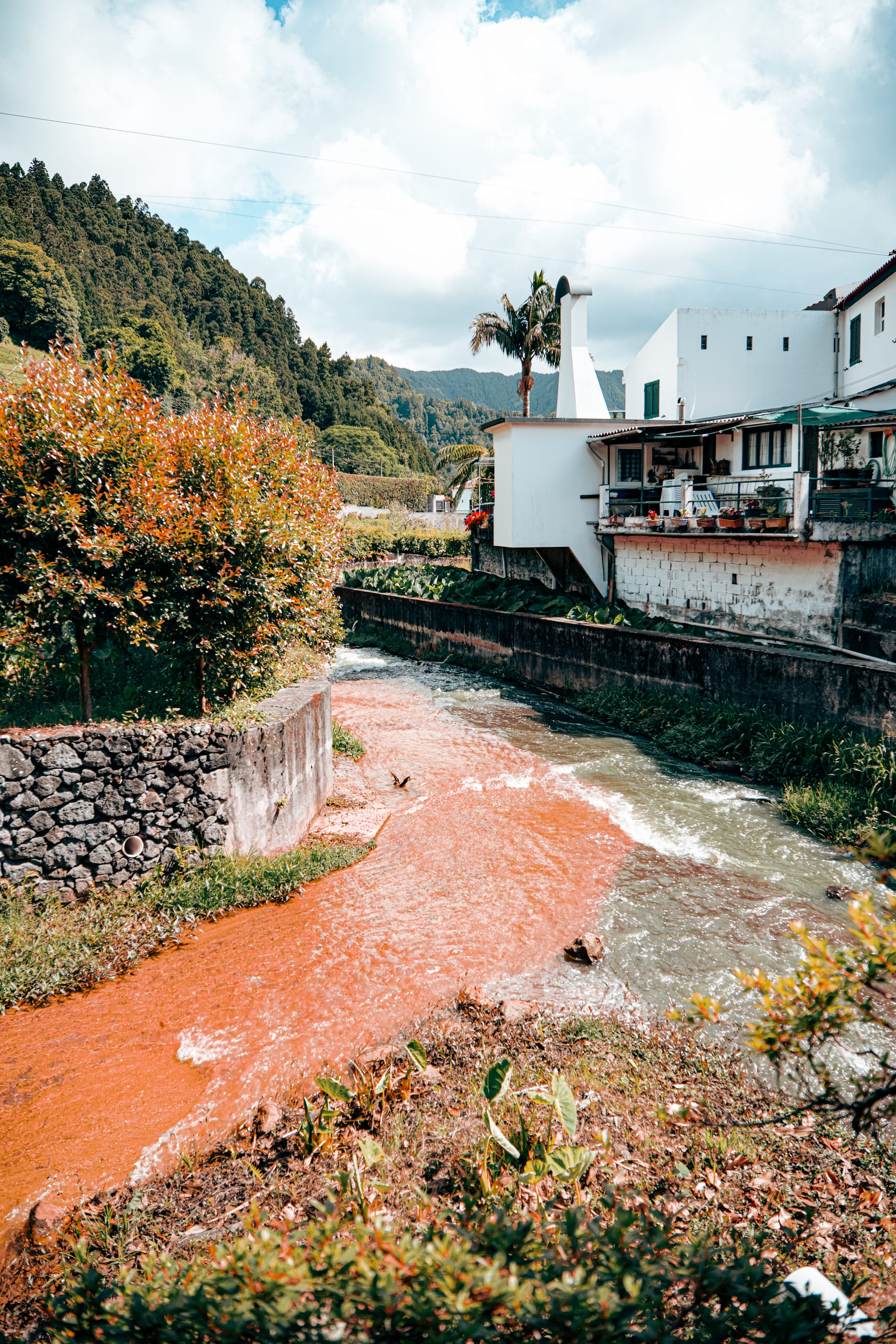
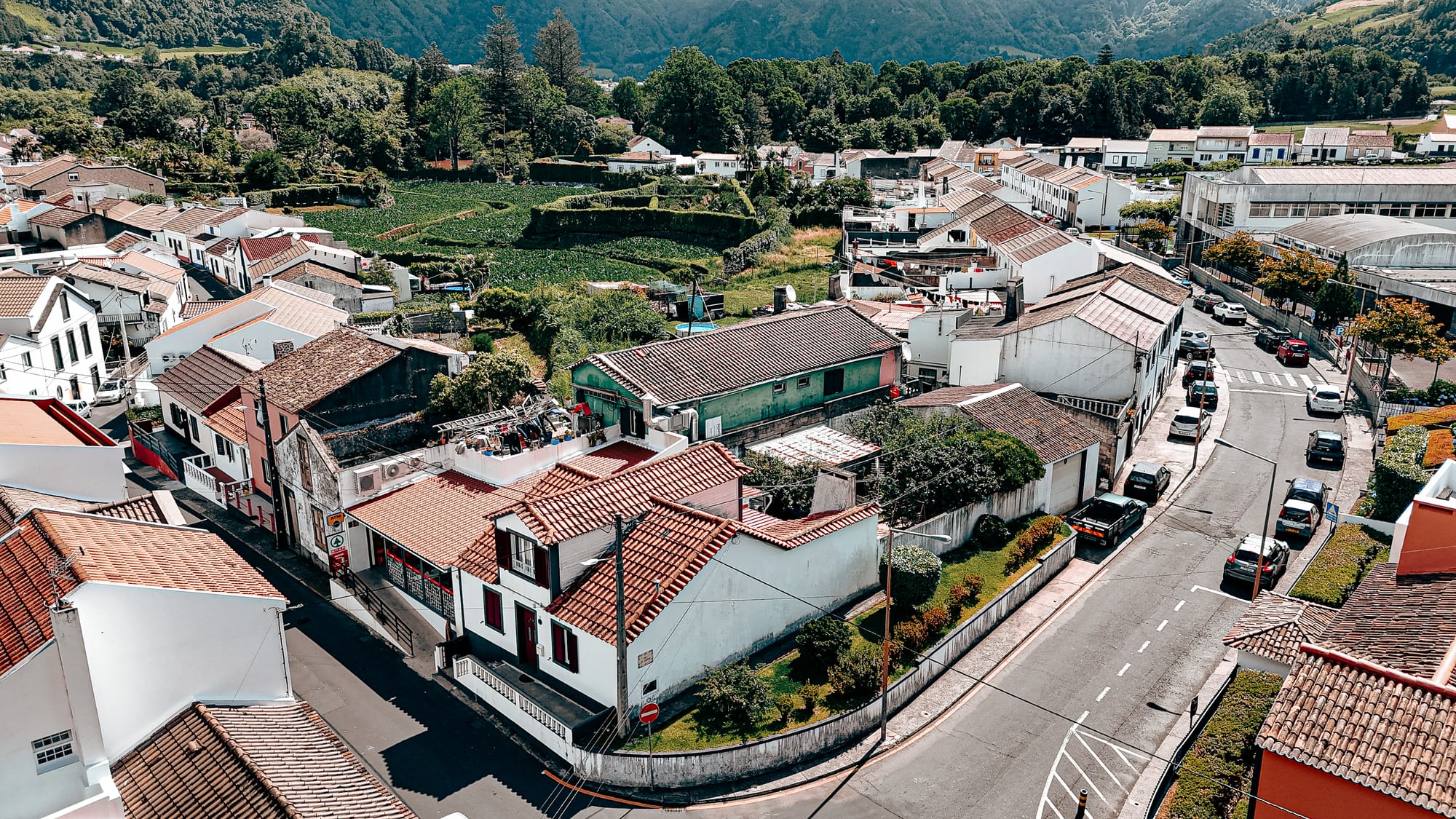
Rust-hued geothermal streams and stacked tile-roof houses define the layered charm of Furnas village
Located in the crater of an ancient caldeira, the town sits within a deep basin rimmed by forested ridgelines. Buildings follow the contours of the terrain. Steam rises from vents in sidewalks. There are no hard divisions between what is natural and what is built.
History, geology, and slow eruptions
Furnas sits in the eastern interior of São Miguel, within a massive volcanic crater formed by multiple collapses and eruptions over tens of thousands of years. The last major eruption was in 1630, and while the town has remained quiet since, geothermal activity pulses on: hot springs, bubbling mud, hissing vents, and the iron-rich waters that streak its stonework.
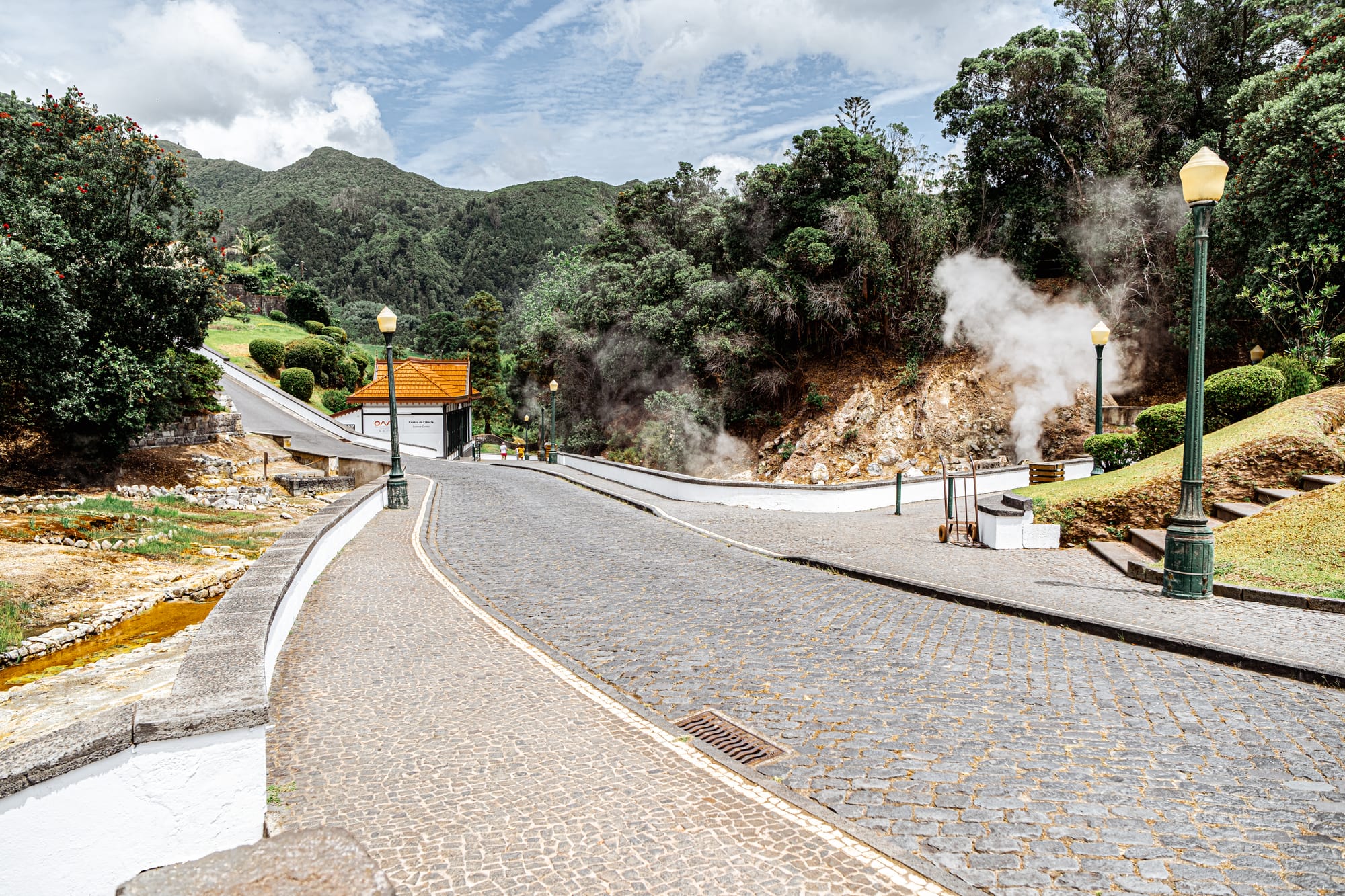
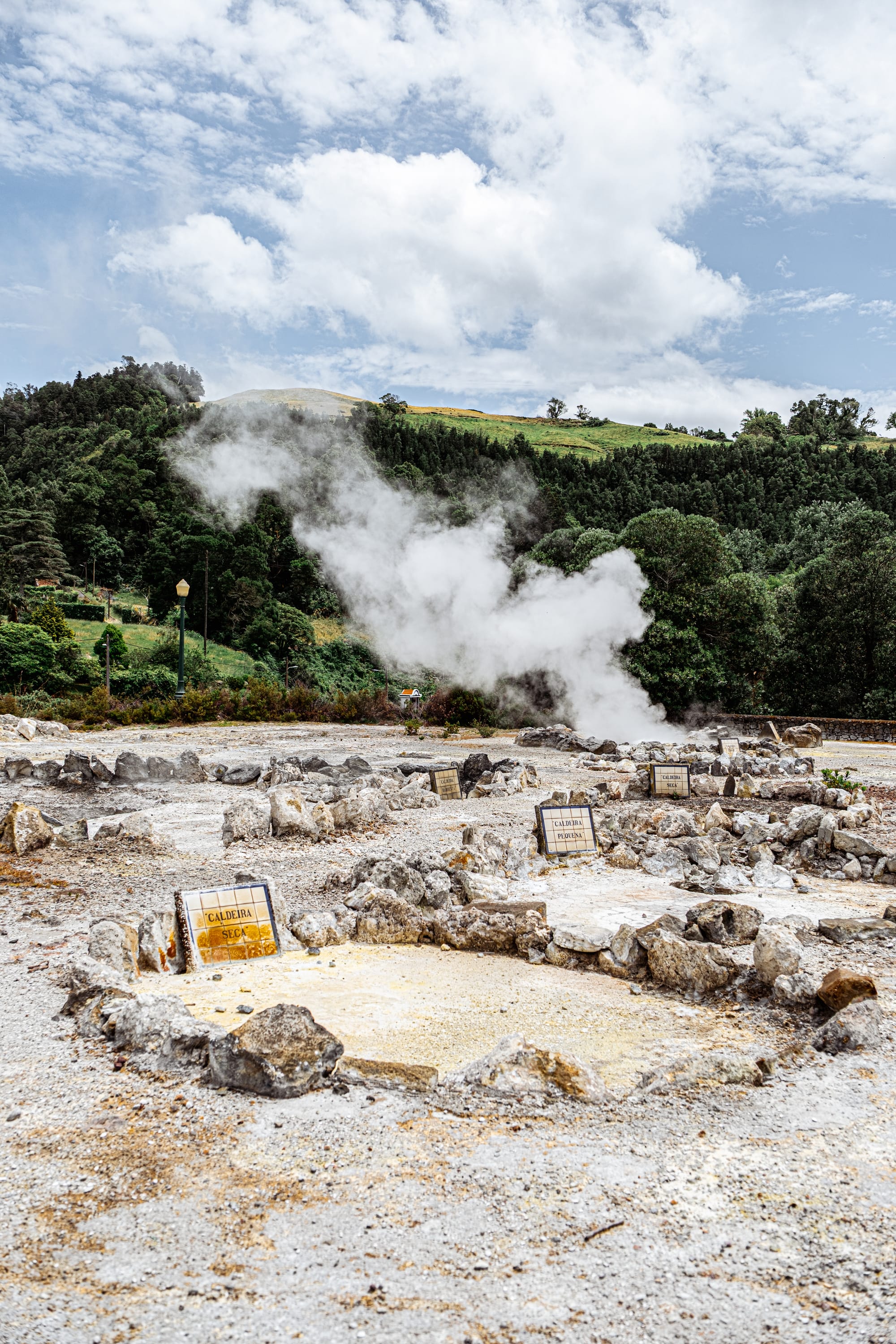
Steam spills onto sidewalks and puffs from the earth—Furnas’ caldeiras shape the streets
Much of the town developed in relation to these forces. Paths curve with the terrain. Houses are built close to fumaroles. Steam appears in casual intervals, sometimes rising from between cobblestones, other times curling from behind a garden wall.
A town that walks at its own pace
Furnas has tiled water taps inlaid with stone. Some run warm, others cold. Ornamental fountains are set into moss-covered walls. On quiet corners, you’ll see azulejos marking street names, or hand-lettered signs tacked to trees. Many of the houses have painted trim and carved volcanic stone doorframes. Others are half-restored, with fruit trees growing close to the facades.
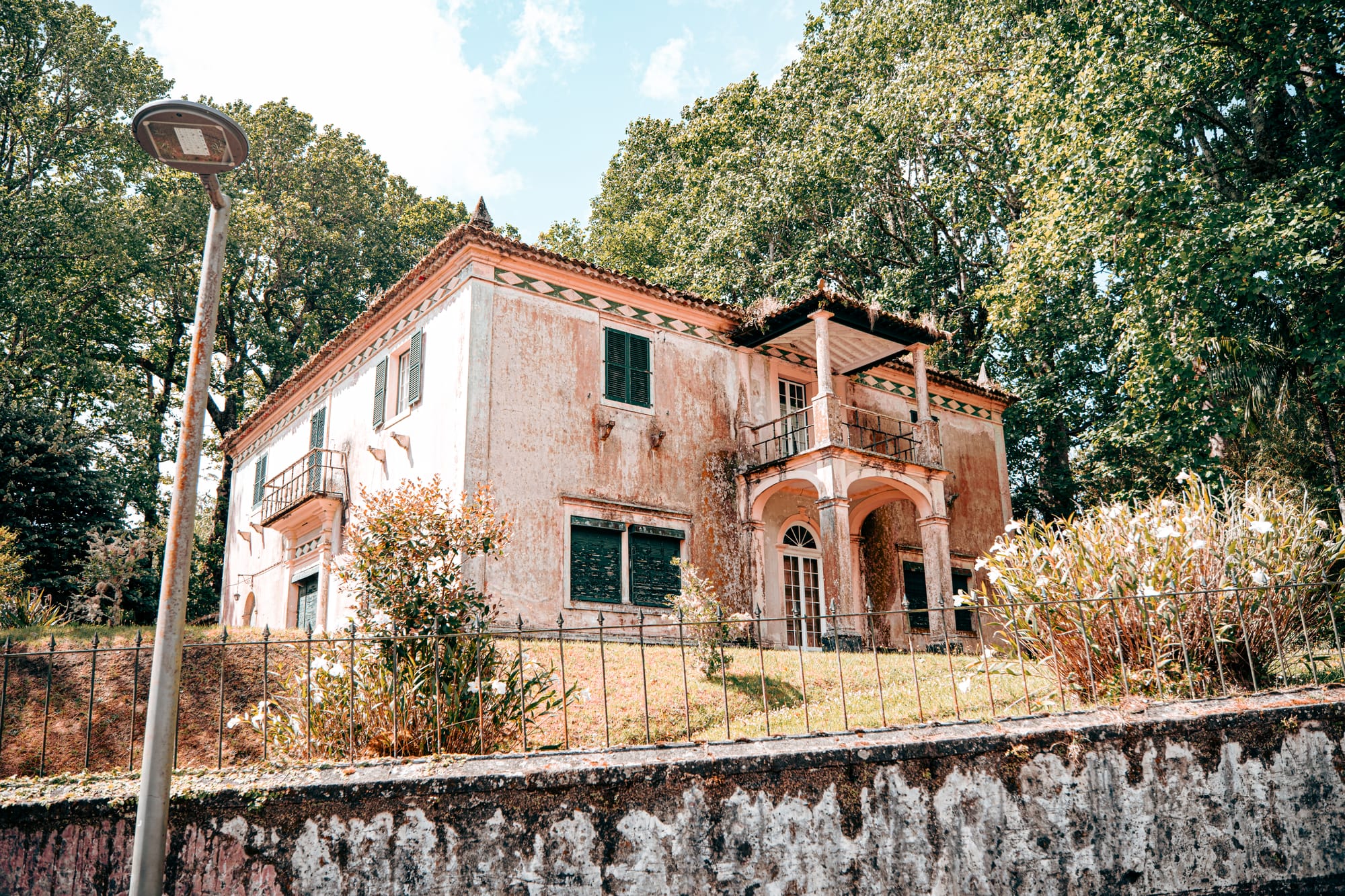
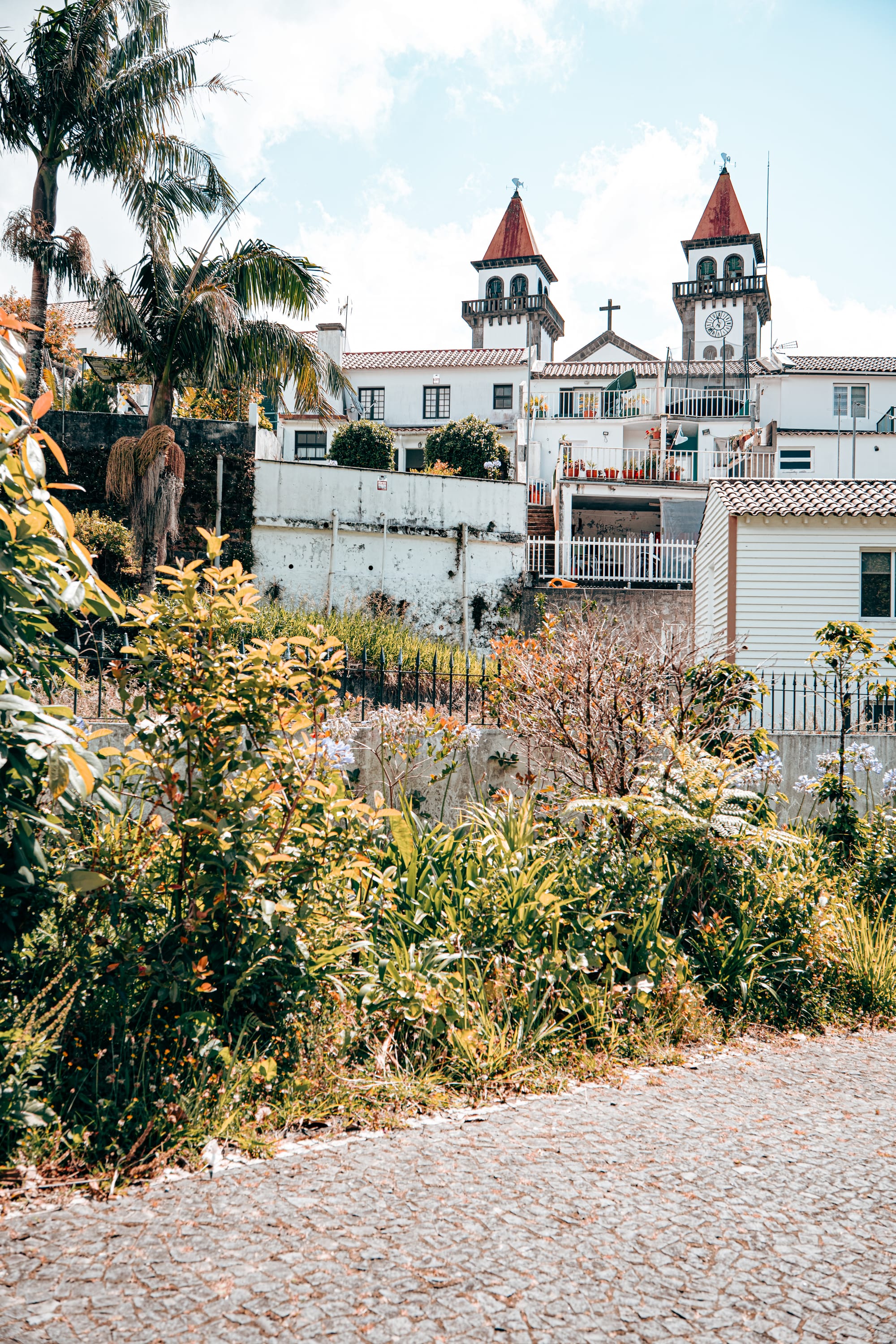
A grand old villa and twin-spired church hint at Furnas’ layered architectural past
At the center of town you’ll find a small square, a few cafes, a bakery, and a cluster of small shops. Everything feels loosely gathered. The sounds are quiet. You hear footsteps, the occasional hiss of steam, and birdsong carried through the trees. A few of the buildings are brightly painted, others left to fade.
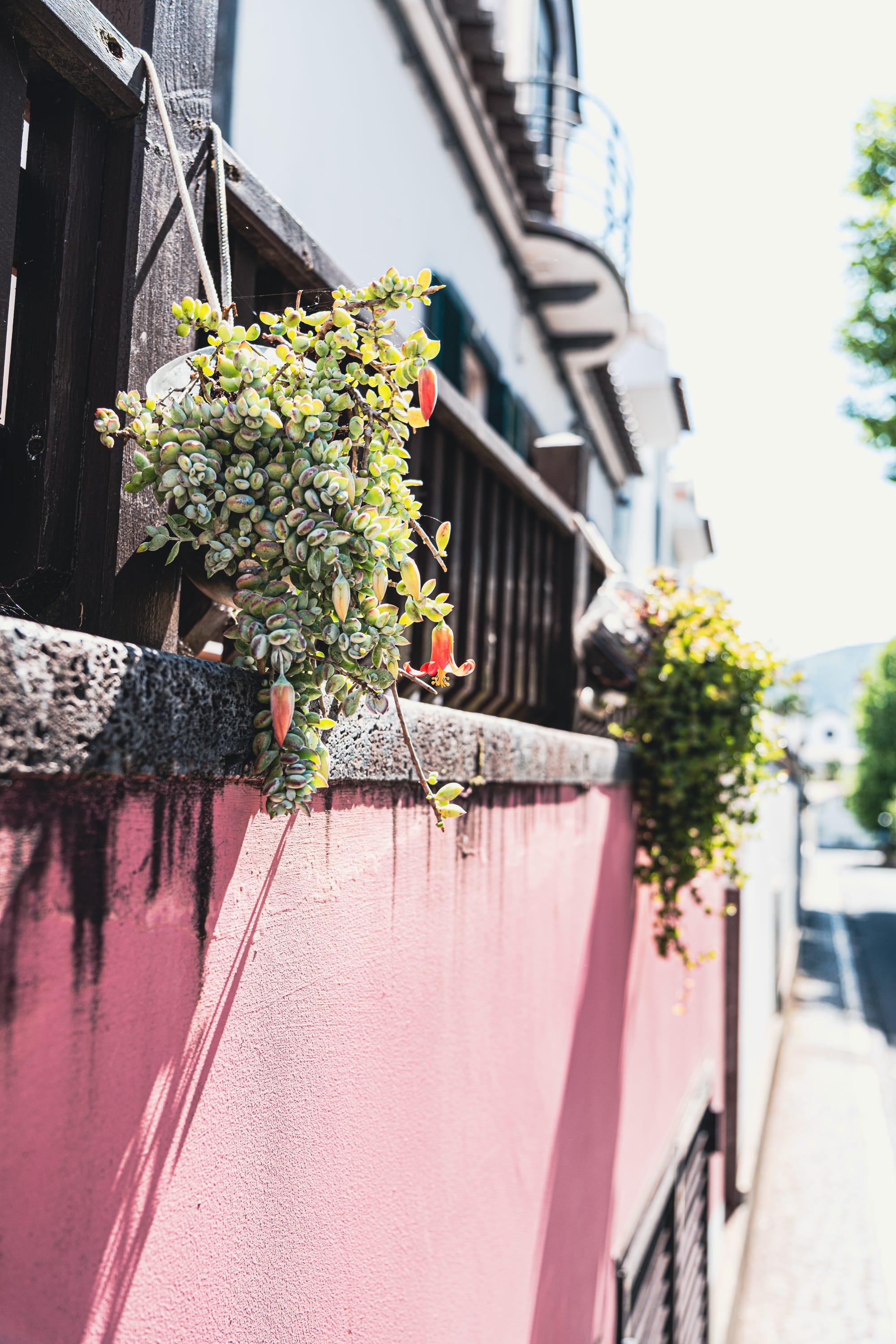
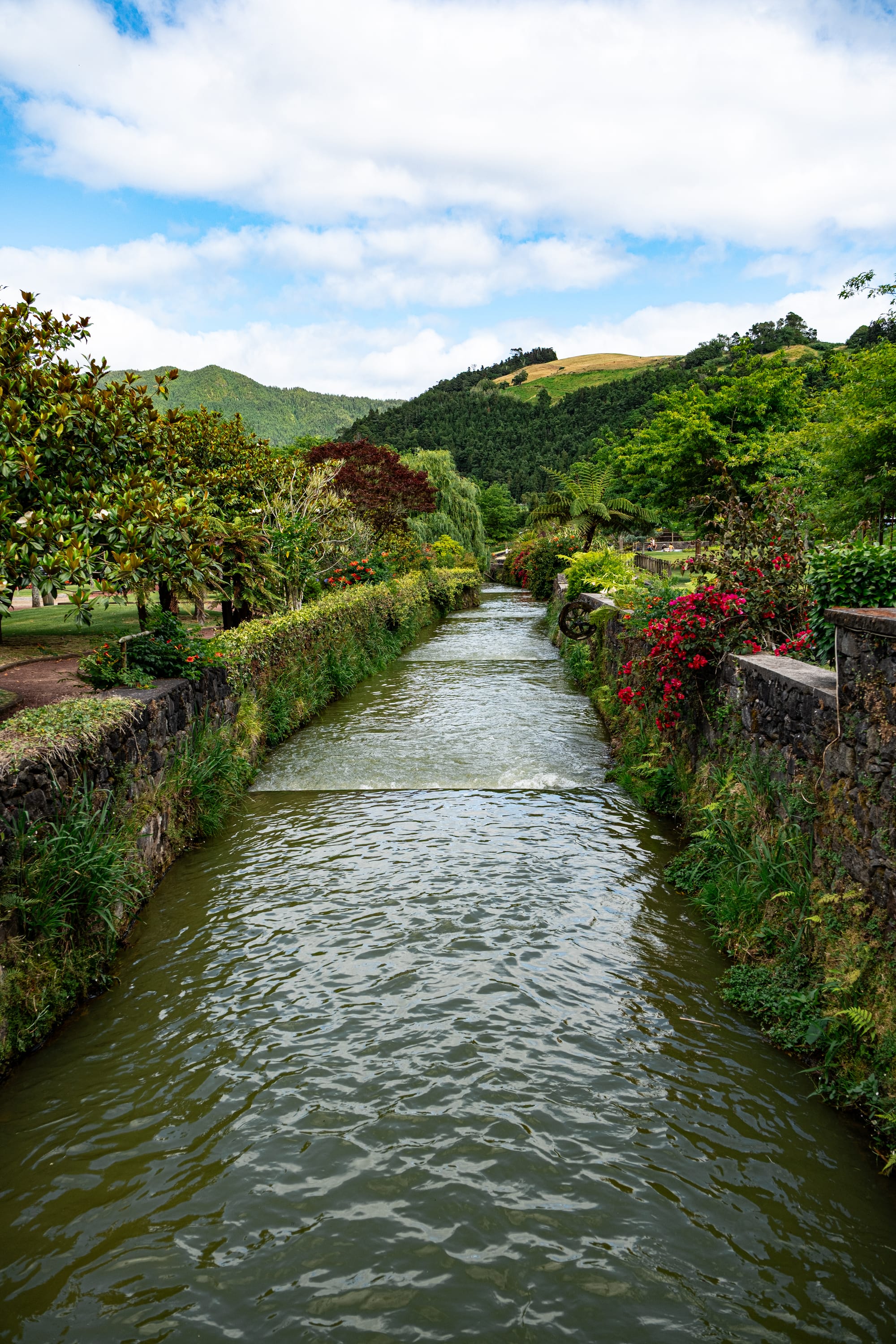
Succulents spilling from a pink-washed wall and a canal bordered by blooming gardens in the heart of Furnas
Some streets curve down into the lower basin; others cut upward toward the forests. You can walk the whole town slowly in under an hour, but you might find yourself pausing again and again—to watch a vent puff steam in the middle of a traffic circle, or to follow the path of a pipe as it disappears into a mossy slope.
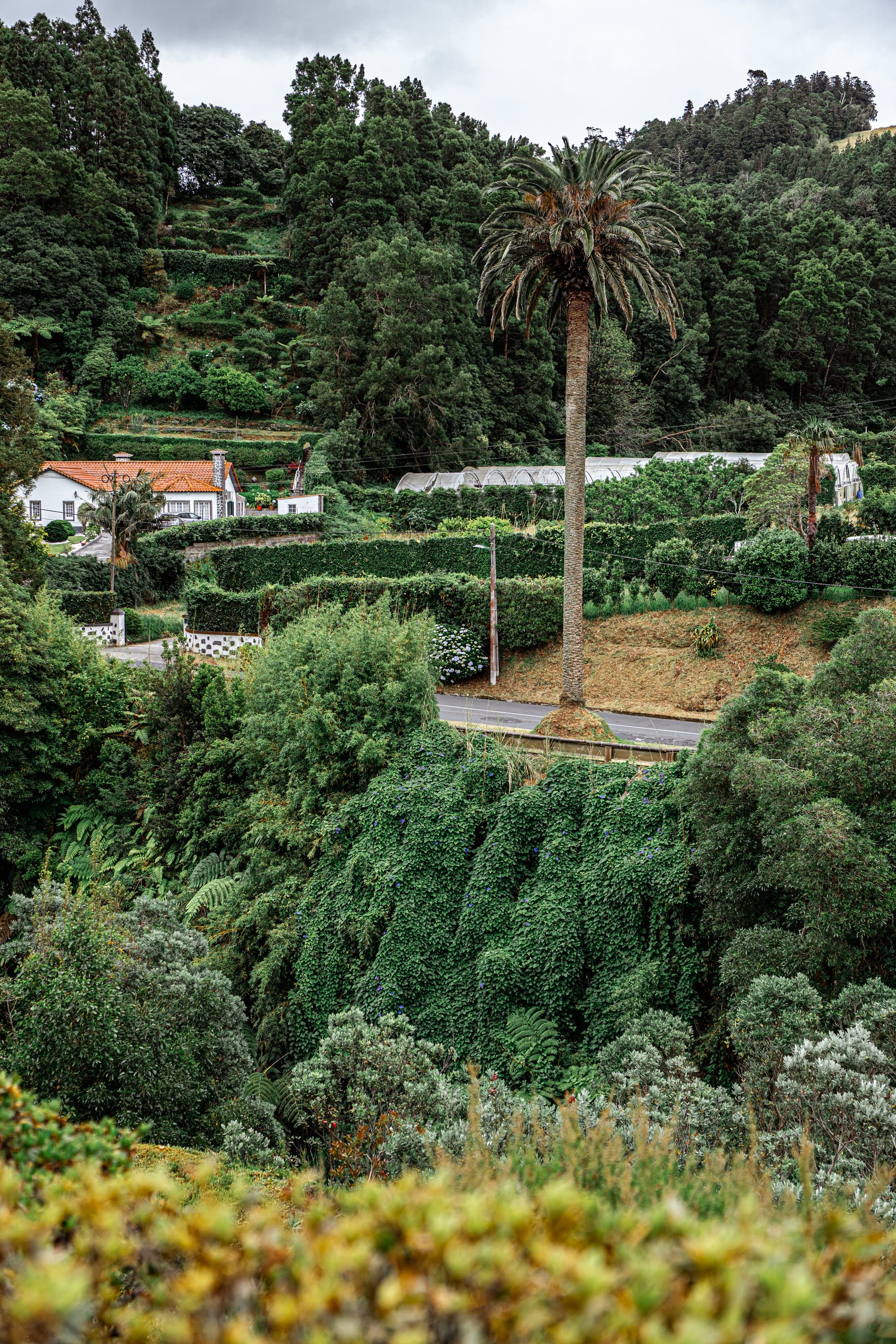
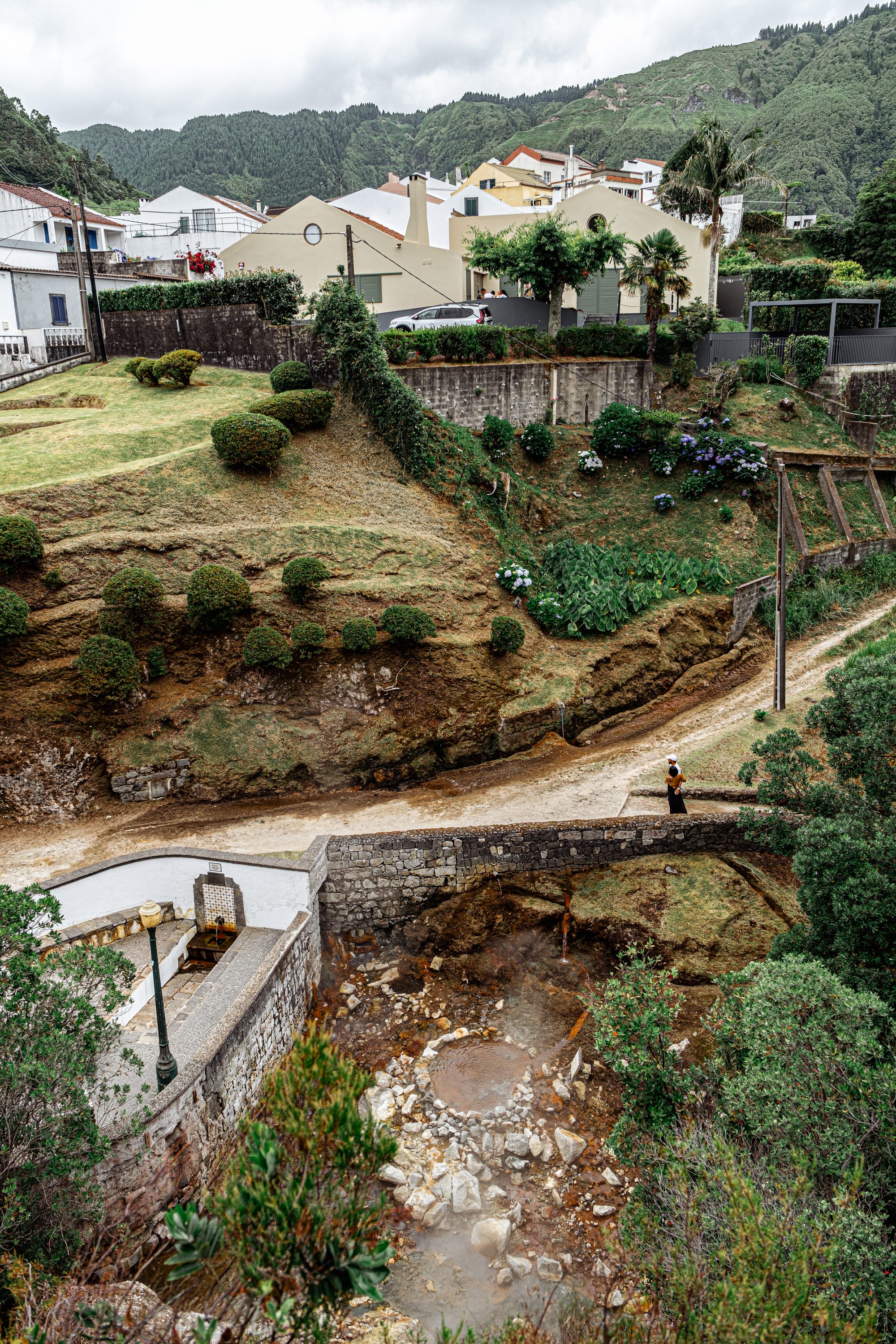
Terraced greenery and quiet paths weave through Furnas’ hillsides, revealing springs, palms, and lush volcanic contours
One tap you’ll almost certainly pass is the Glória Patri spring, where locals line up with jugs to collect fresh drinking water. It flows cold, clear, and slightly mineral-rich, with a faintly metallic taste. It’s considered by many residents to be the best water in the area, and you’ll often see it collected in bulk for household use.
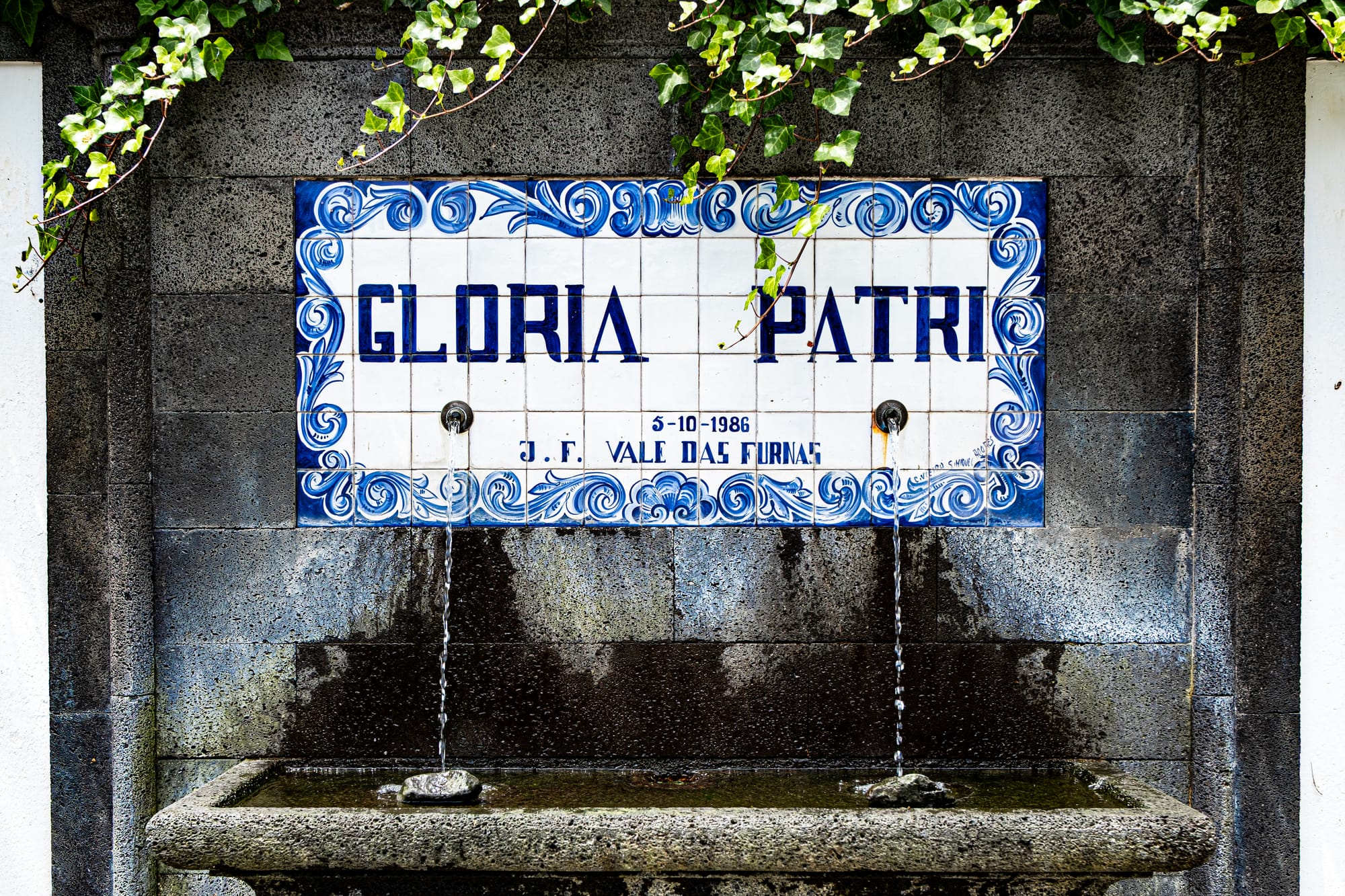
Throughout town, there are other public taps as well—some with ornate blue-tiled murals and decorative stonework. Each is slightly different, and many are built into corners, walls, or tucked under low eaves. They blend into the town’s structure in quiet, practical ways, often still in regular use.
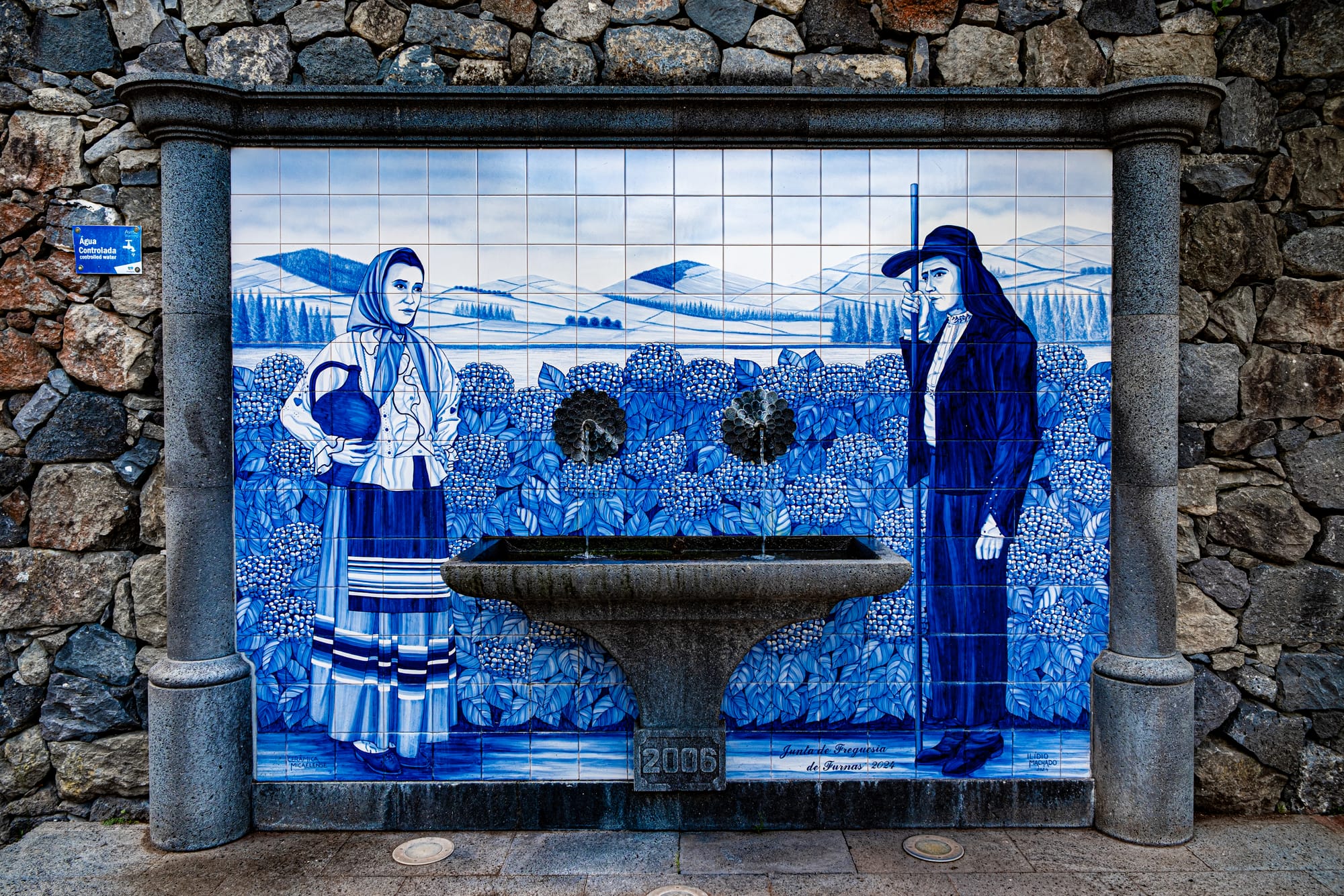
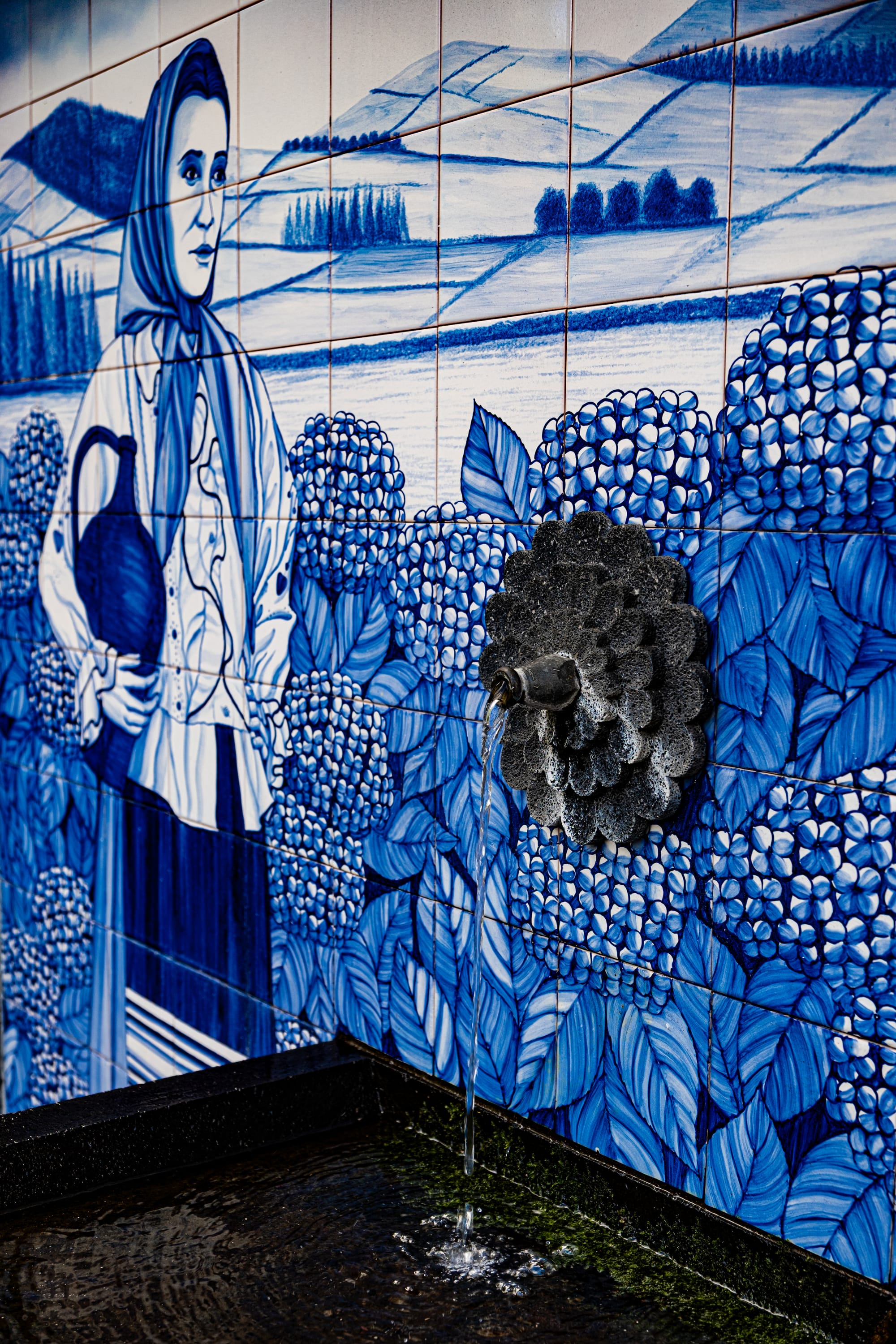
Traditional mural-tiled drinking fountain with hand-painted figures and hydrangea blossoms
Another notable spot sits along the path near the stream: a small building with blue-trimmed windows and a prominent water wheel out front. This site is Moinho de Água das Furnas, often referred to locally as the Artesanato Moagem – Junta de Freguesia das Furnas. It’s a historic watermill and artisan center along the river, showcasing traditional milling techniques and handcrafts.
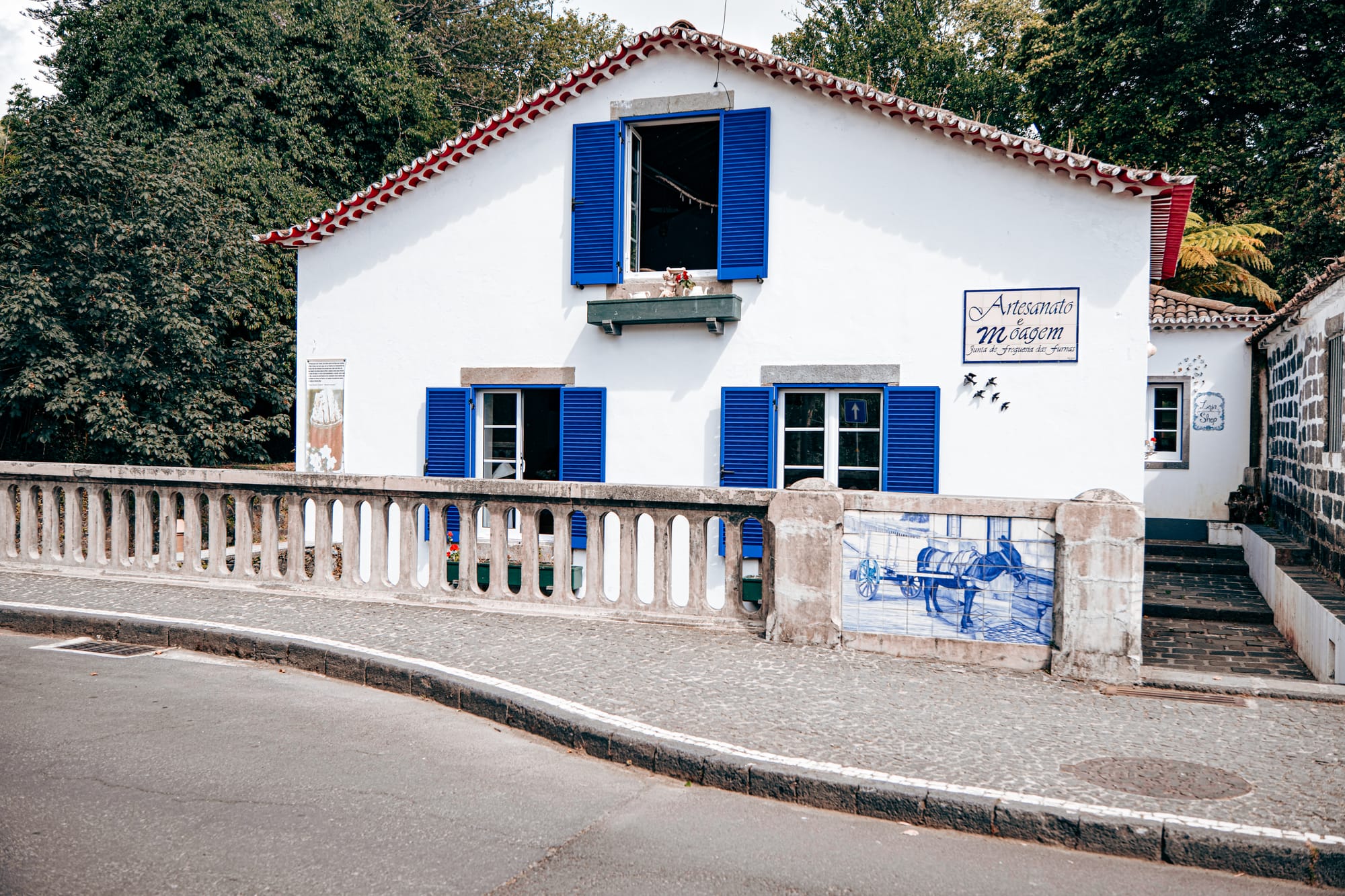
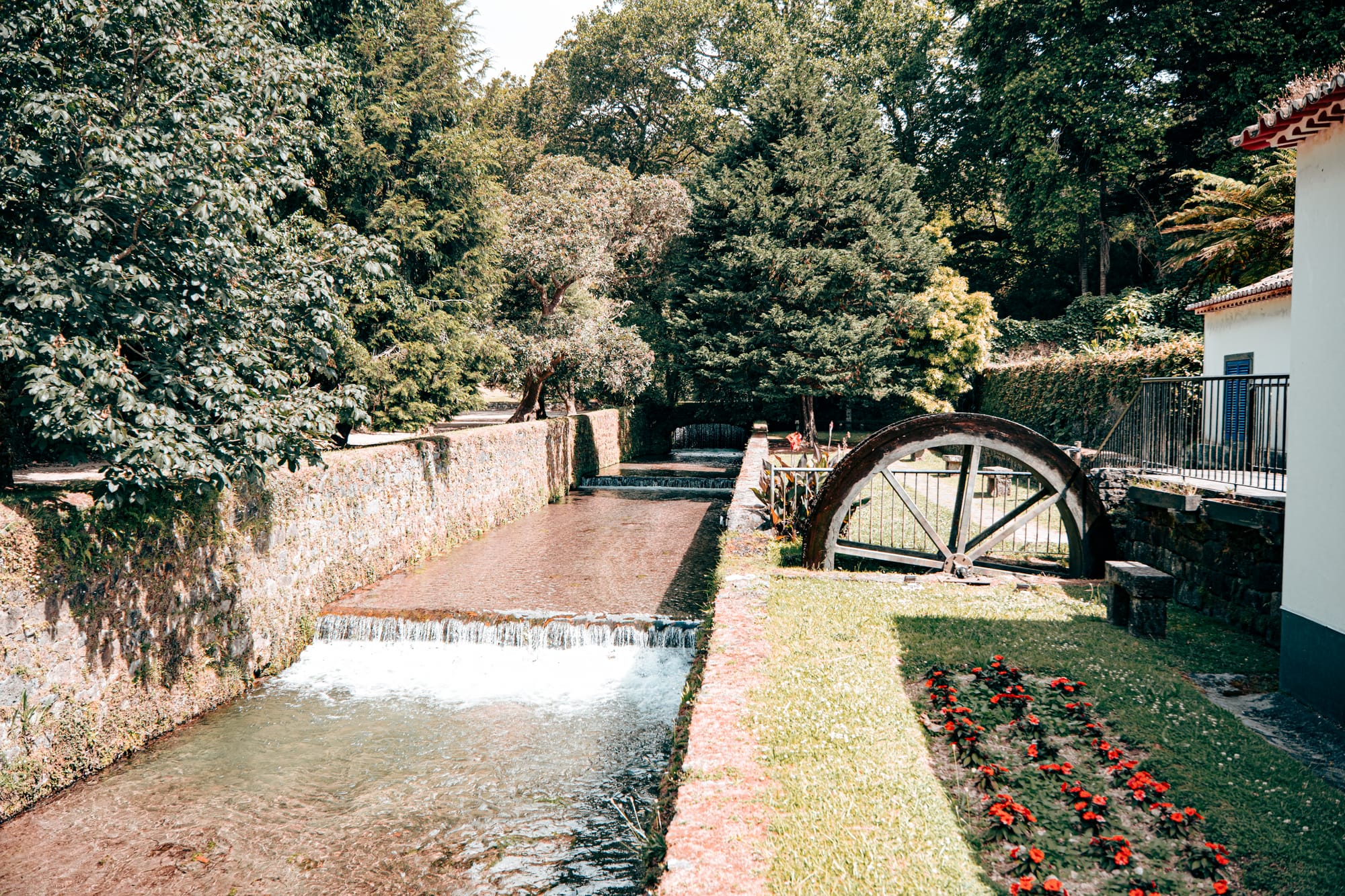
Local crafts center and water mill set beside a landscaped stream and blue-shuttered buildings
Whether or not it’s always open, the surrounding scene is beautifully composed—white walls, flowing water, and the curved wheel slowly turning beside a mossy stone canal. A good pause point, especially if you're walking without a fixed route.
Not far from the main square, the Frutaria Luís Estrela displays crates of vibrant produce along the sidewalk.
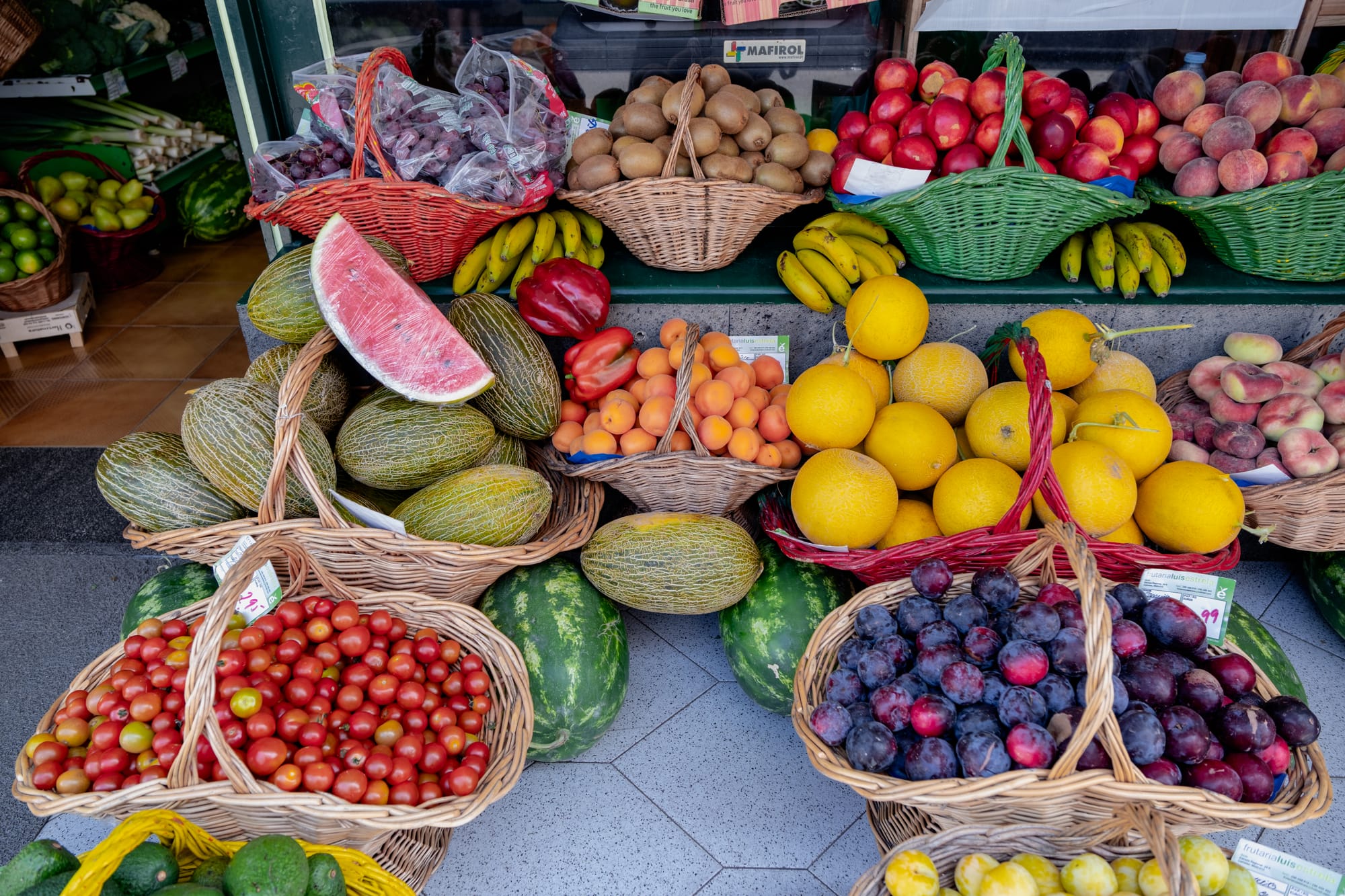
Papayas, bananas, leafy greens, melons, and avocados are all stacked in wooden boxes and baskets. It's the kind of place that invites you to slow down and gather something seasonal, whether or not you’re cooking that night.
Things to do in Furnas
Furnas is known for its hot springs, and you can read our full post on the caldeiras for a deeper look into the steamy vents and sulfur pools that edge the town.
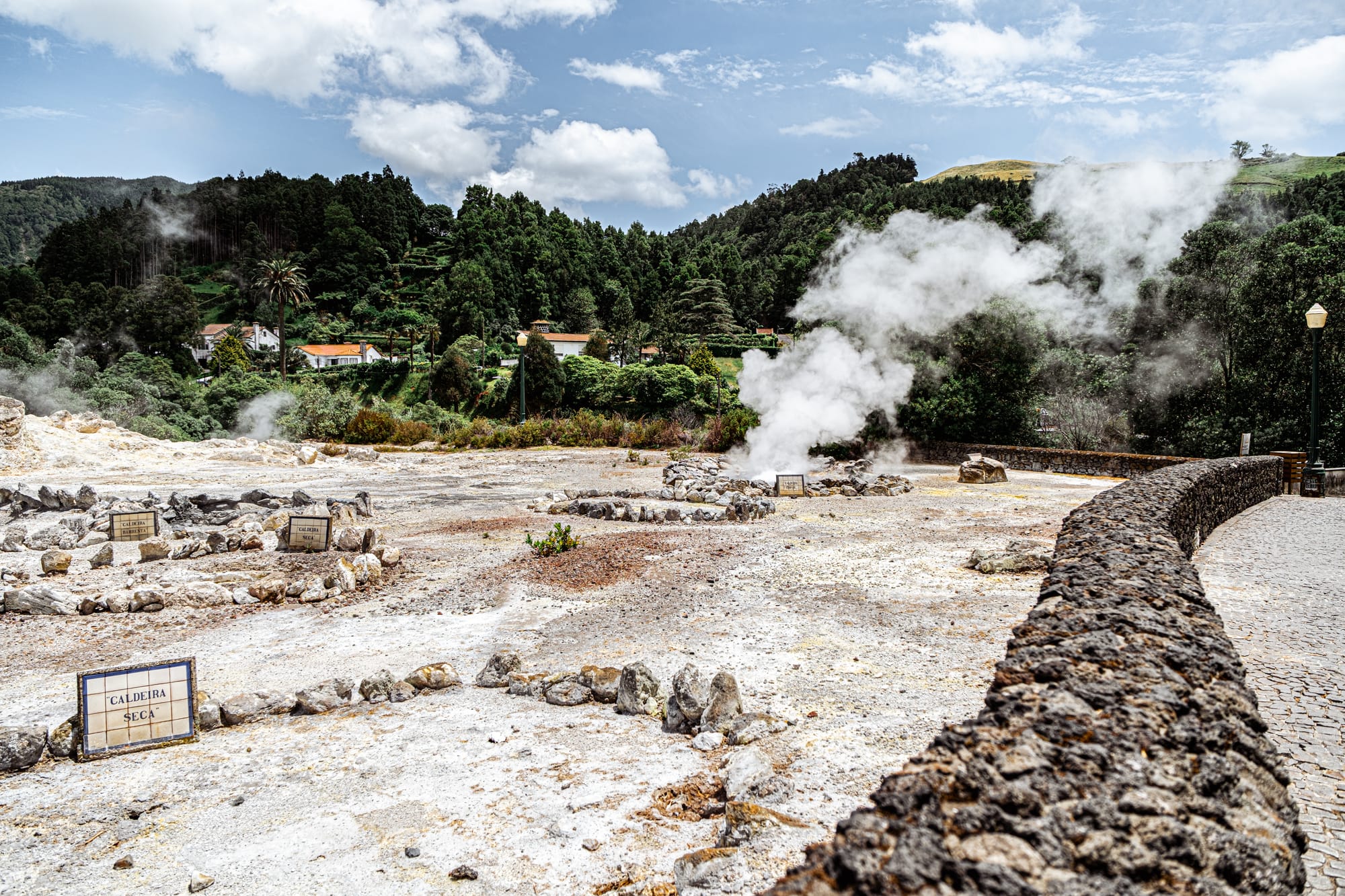
You can also check out the lake hike, a half-day walk around Lagoa das Furnas that begins just outside the village and loops through forest, farmland, and lakeshore. Along the way, you’ll pass the striking Gothic-style chapel of Nossa Senhora das Vitórias, its dark spire rising from the trees at the lake’s edge.
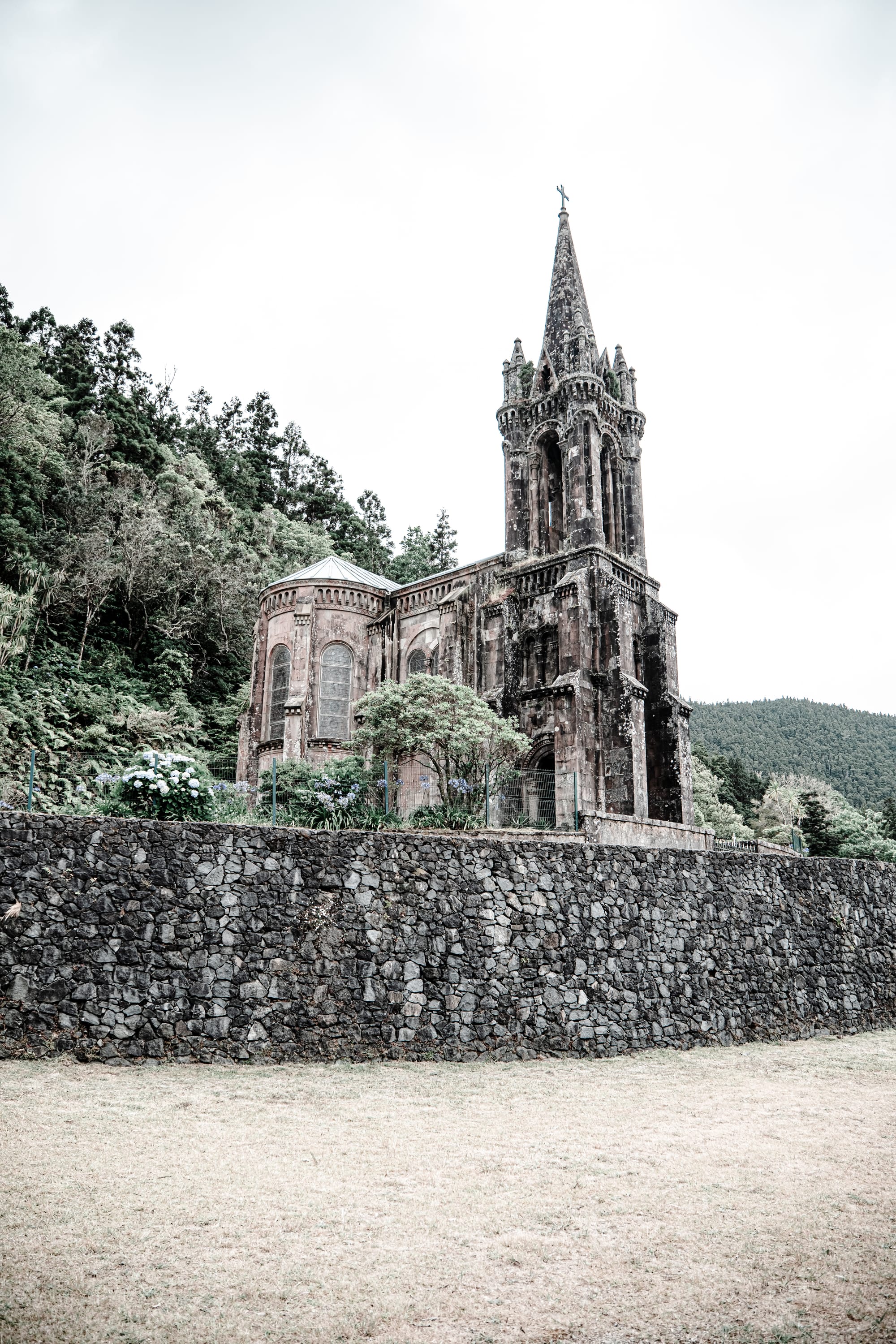
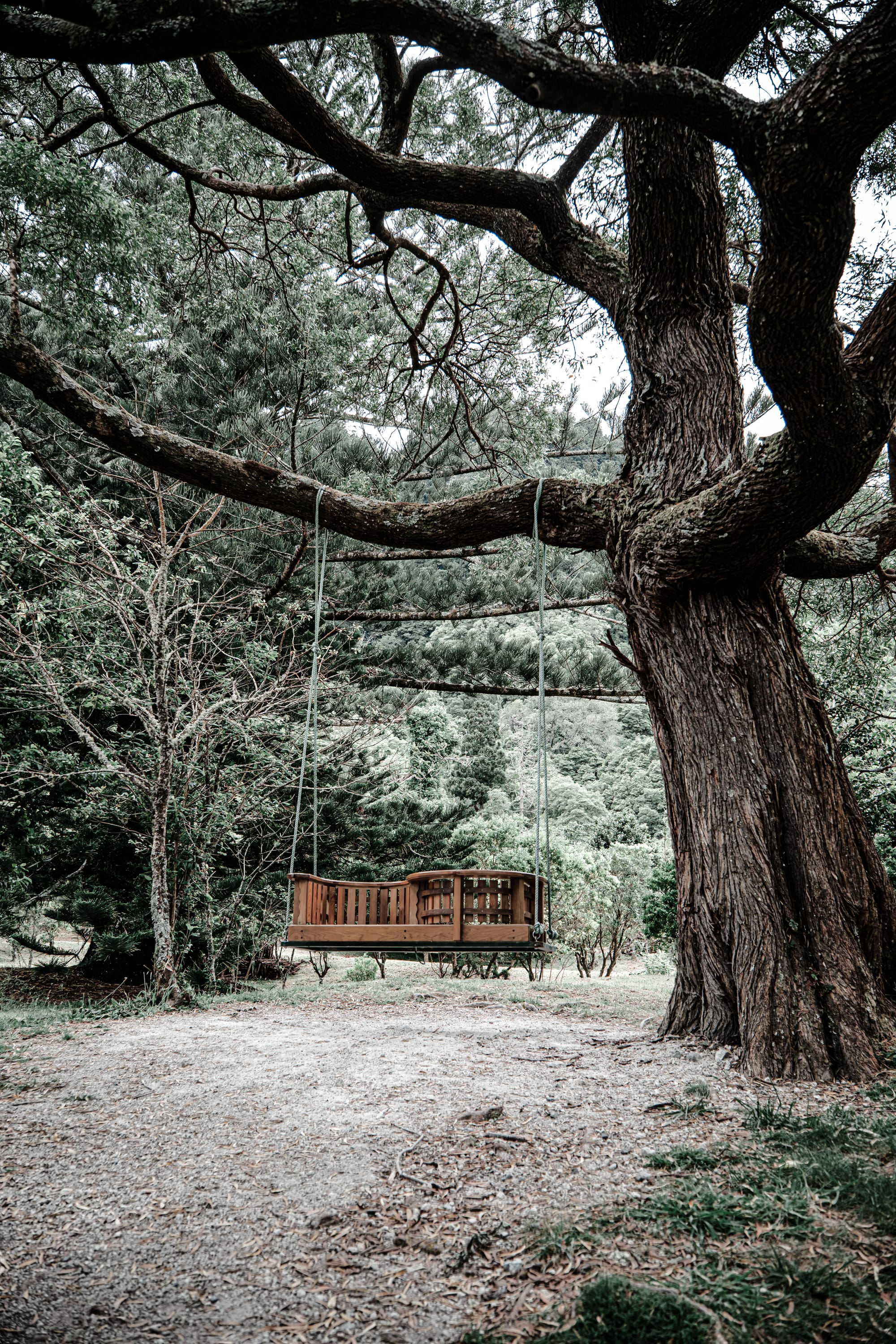
Gothic revival church and hanging bench swing near the shores of Lagoa das Furnas
Along the lake hike, you'll run into Grená Park, which has beautiful flora and is also the entry point to a number of hiking paths.
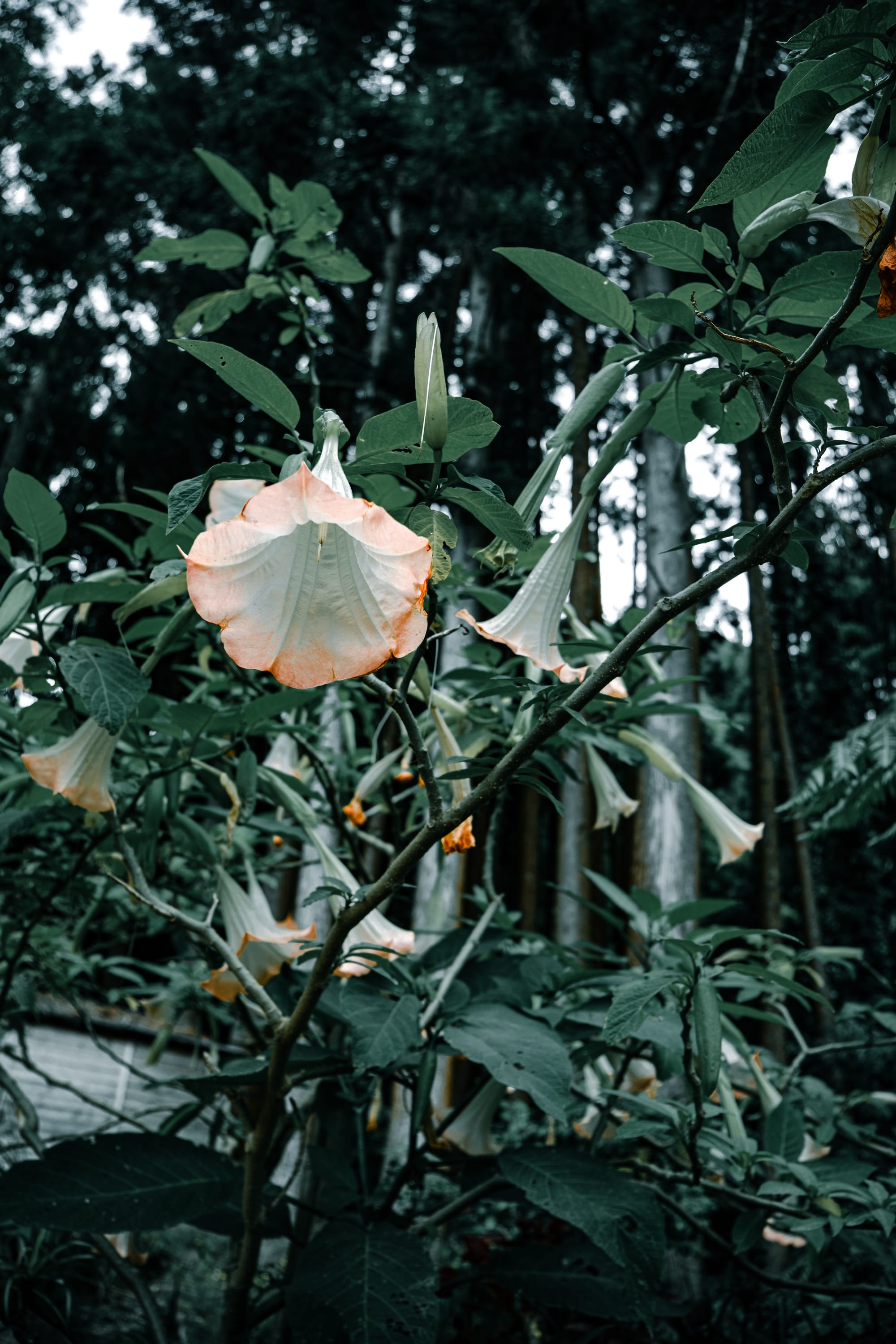
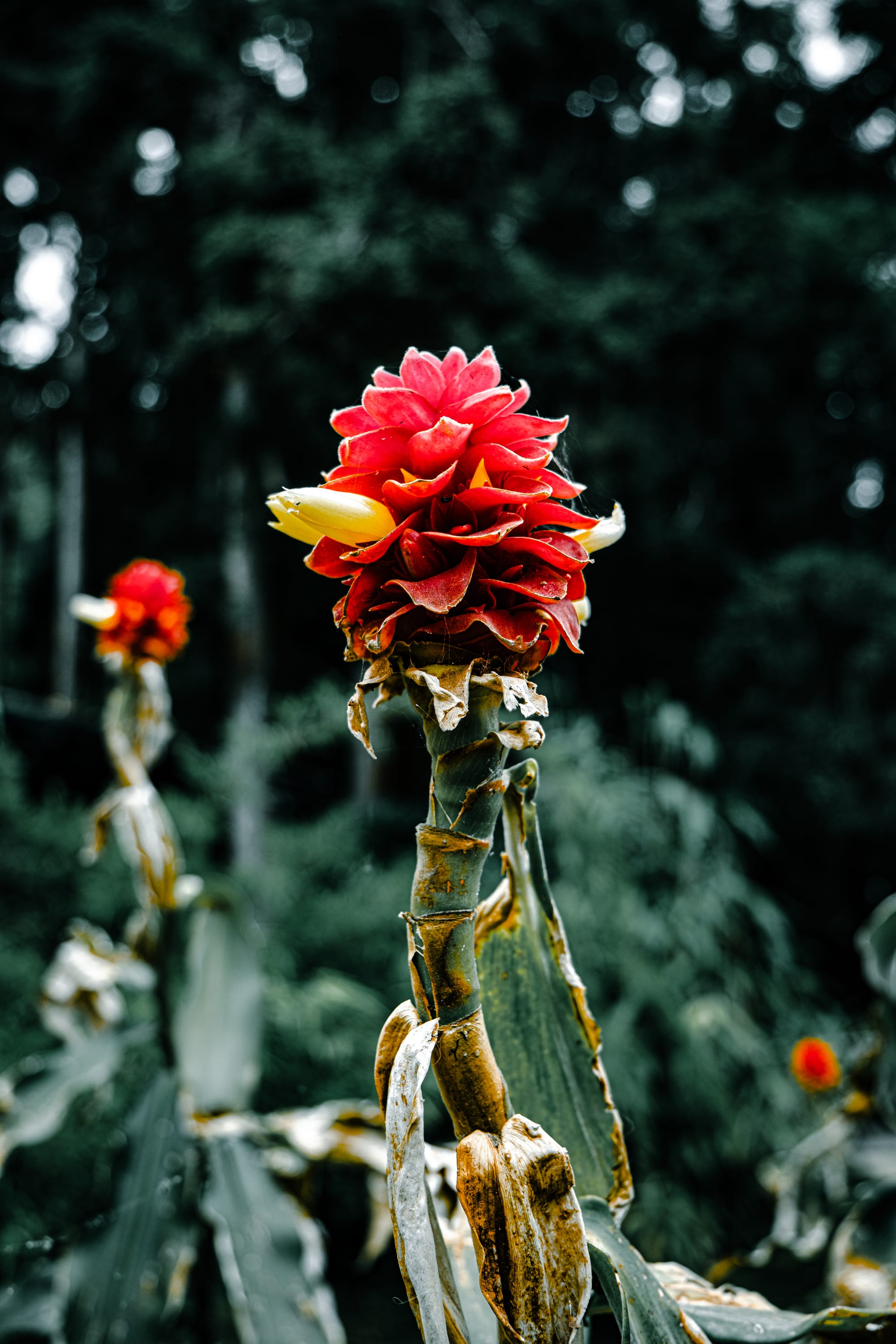
Tropical blooms from the forested paths of Grená Park
Poça da Dona Beija, a series of stone-lined thermal pools, is one of the more built-up options and just a few minutes' walk from the center. It’s a great place to soak in the evening, especially after a rainy day.
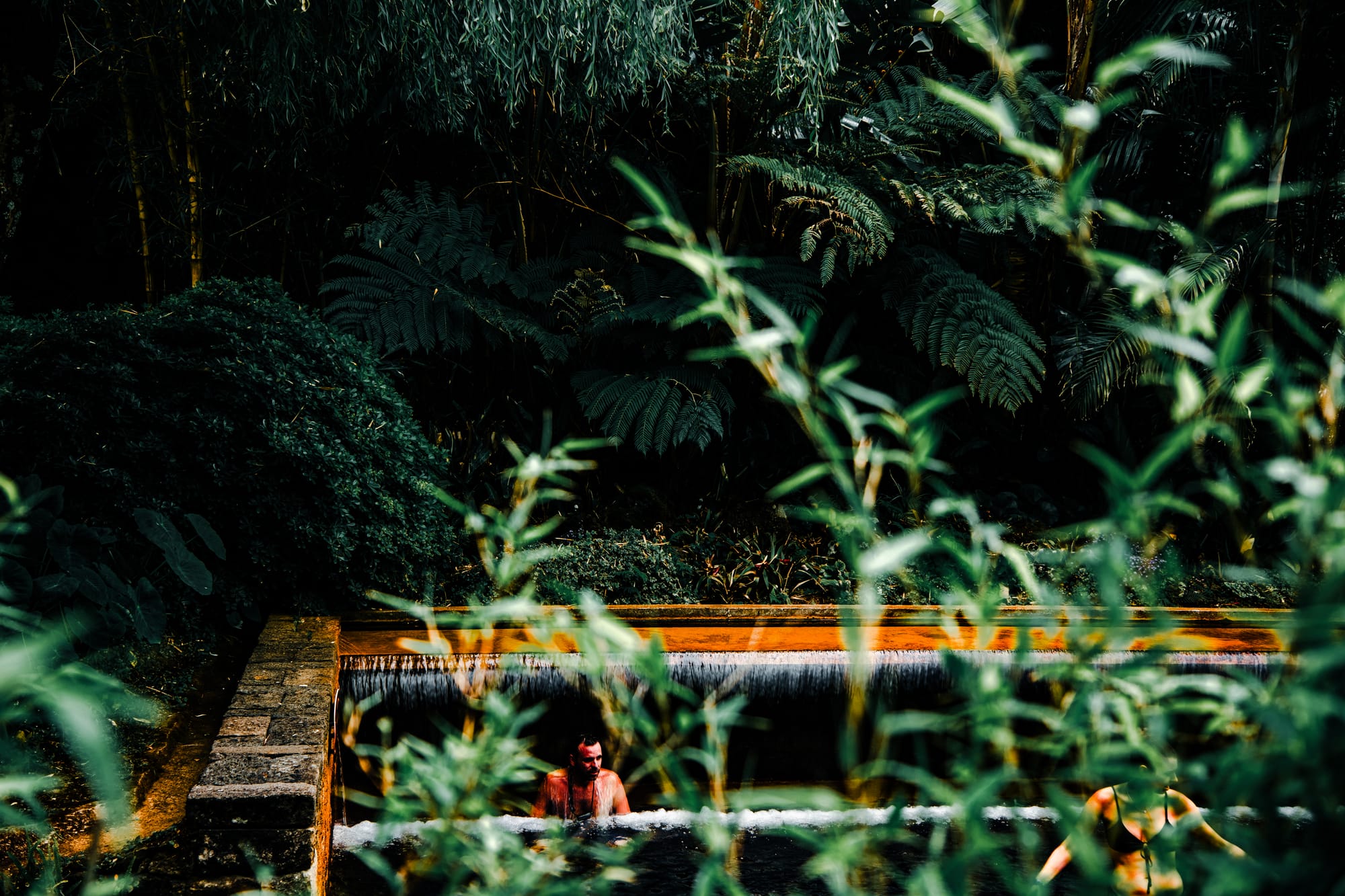
Beyond that, Furnas is a place for small movements. Sit on a stone bench in front of a steaming spout. Try the sweet corn cooked directly in thermal water. Wander past garden walls painted with mineral bloom.
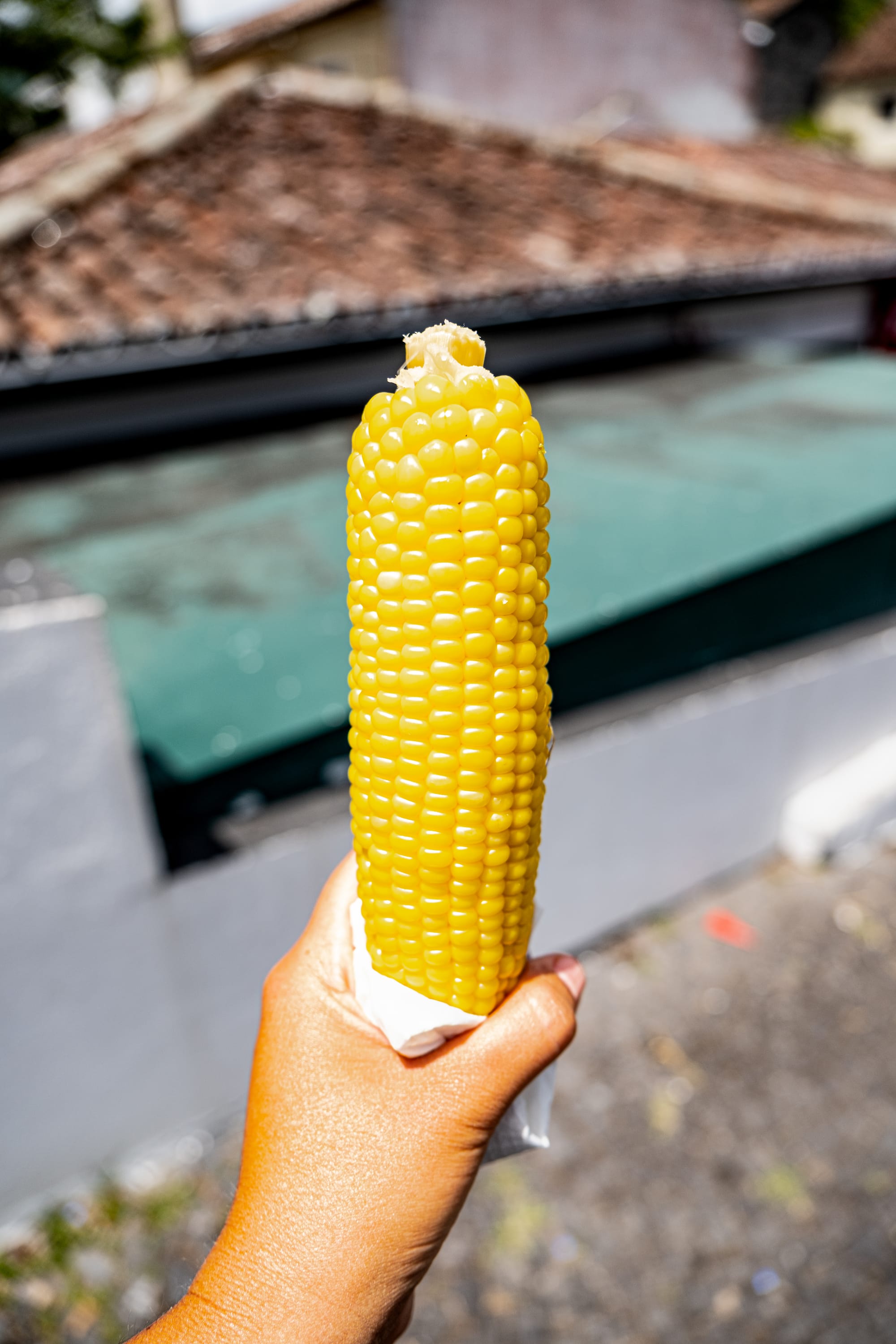
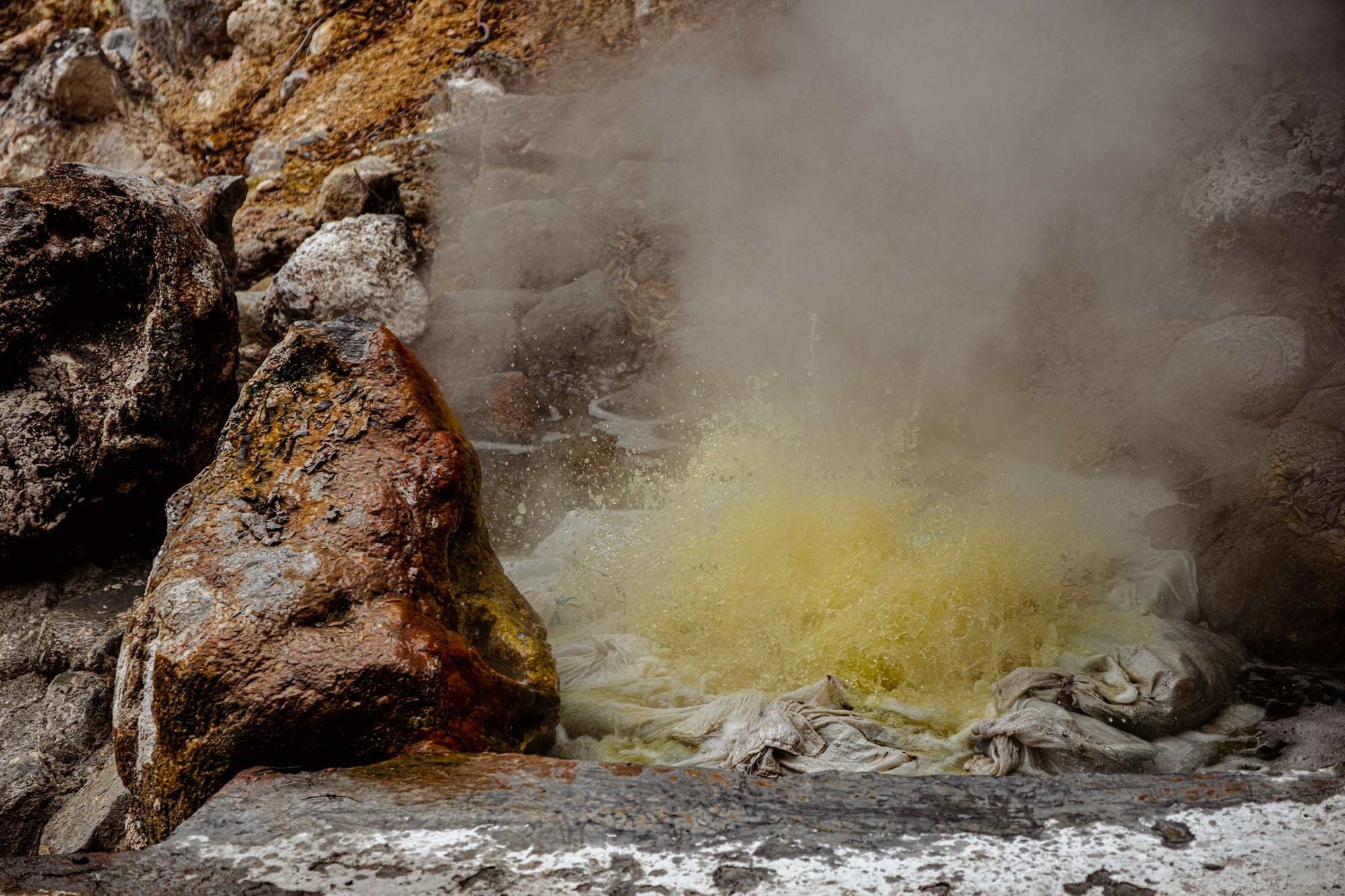
Corn cooked in geothermal heat—a steamy local delicacy and sensory reminder of Furnas’ volcanic undercurrent
You can also hike or drive to the Furnas viewpoint, Miradouro Pico do Ferro—a high, curving ridge that offers a full panorama over the crater. From up there, the town sits like a quiet map: red roofs, green plots, slow curls of mist.
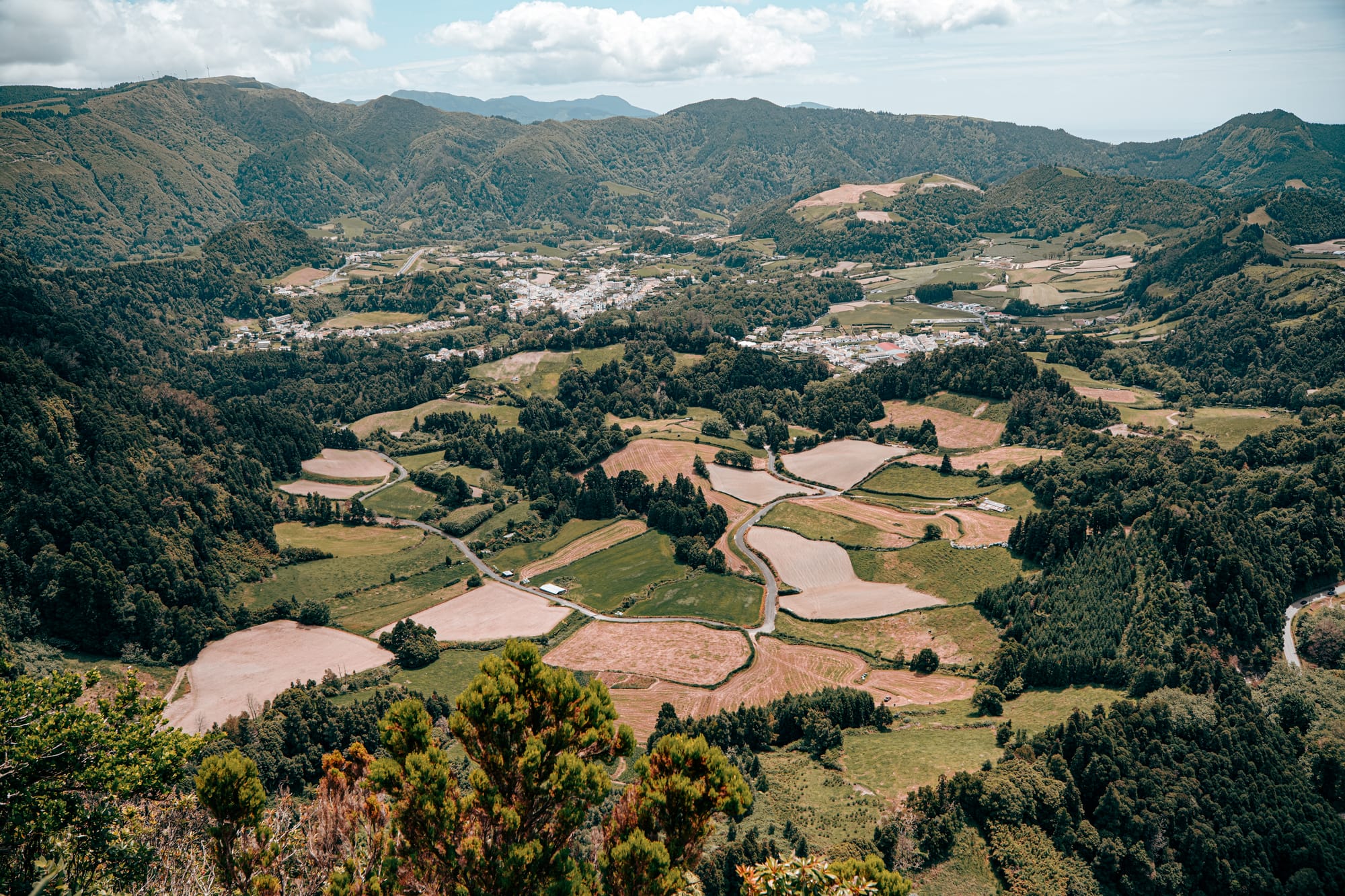
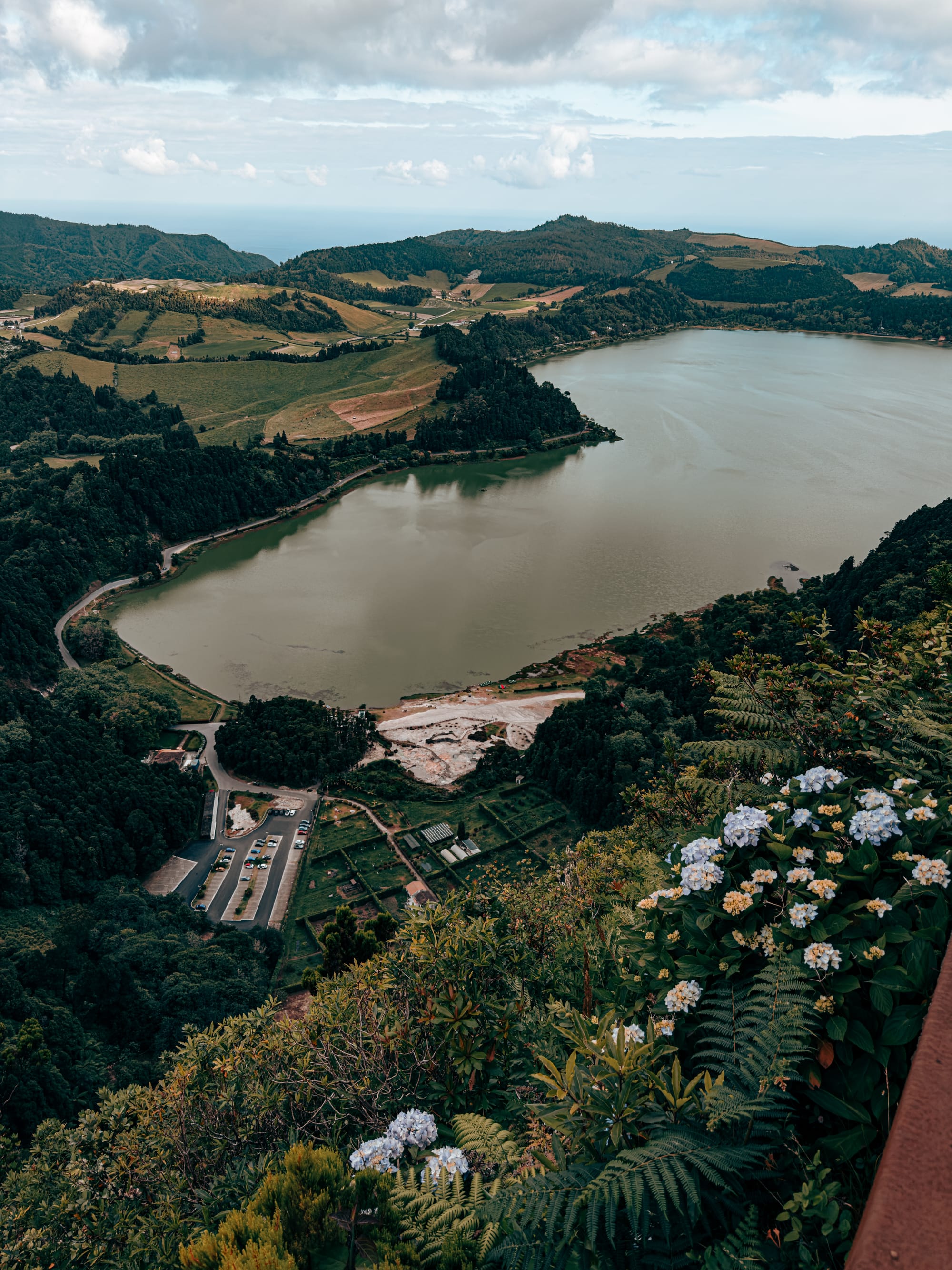
Views over Furnas valley and volcanic lake from Miradouro Pico do Ferro
The lake shimmers off to one side, and the caldeira basin reveals its full shape. It’s worth going even when visibility is variable. Clouds move fast up there.
Flora, fauna, and the scent of the valley
The volcanic soils feed everything: ferns, ginger lilies, taro, mosses, bananas, hydrangeas. You'll see tree ferns bigger than people, their fronds slowly uncurling like scrolls. Roadsides are overgrown with wild ginger and blue morning glories. Steam helps. So does rain.
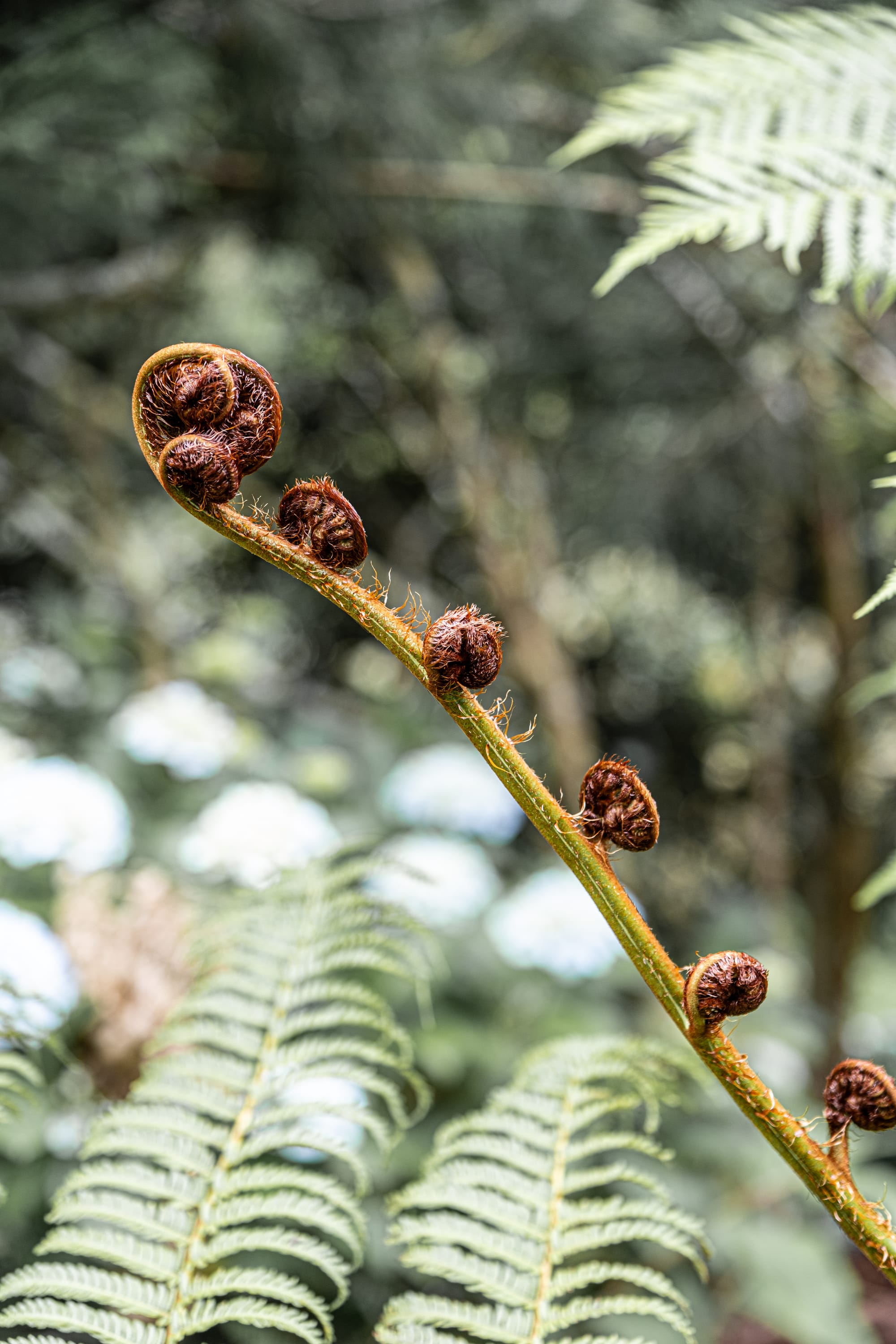
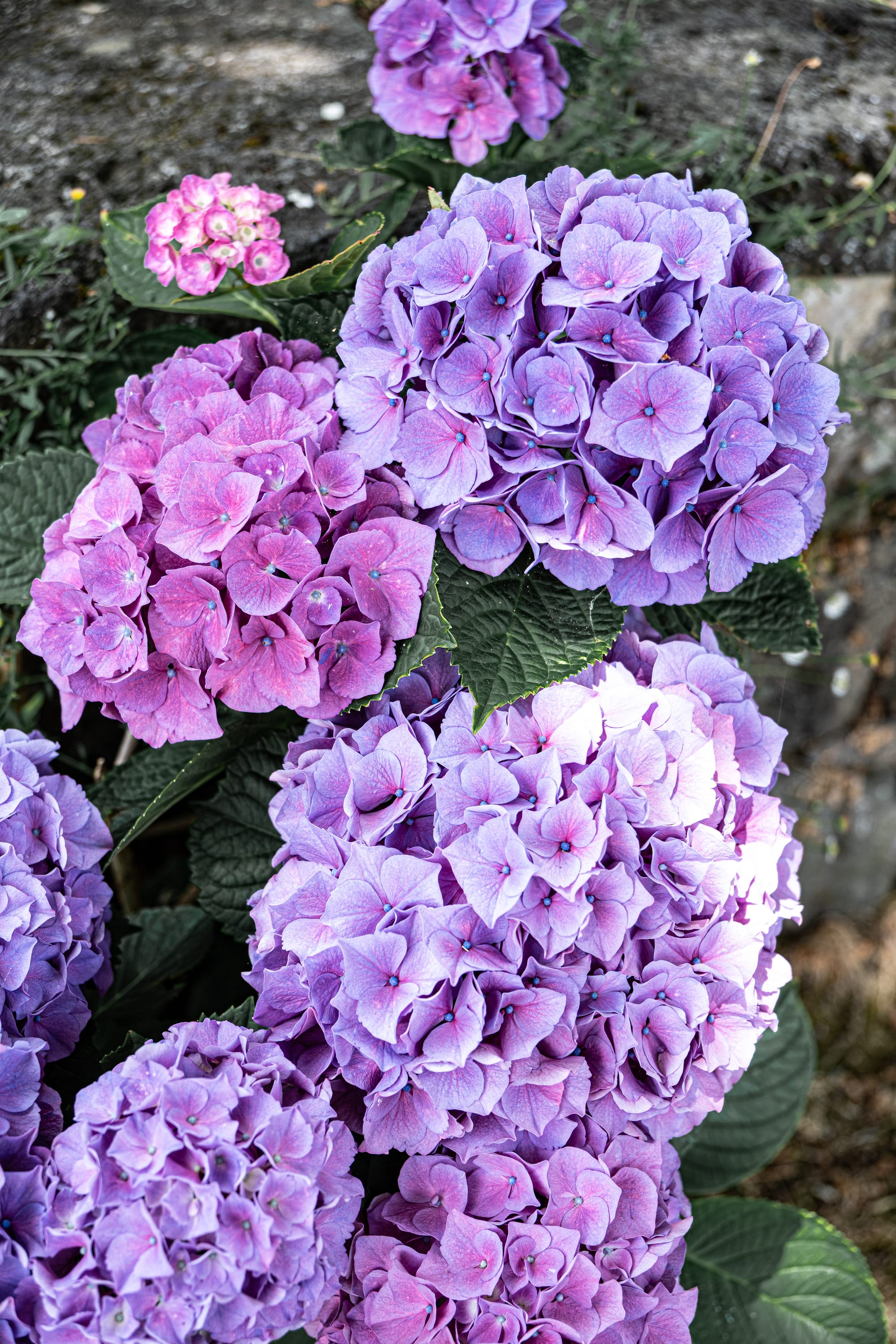
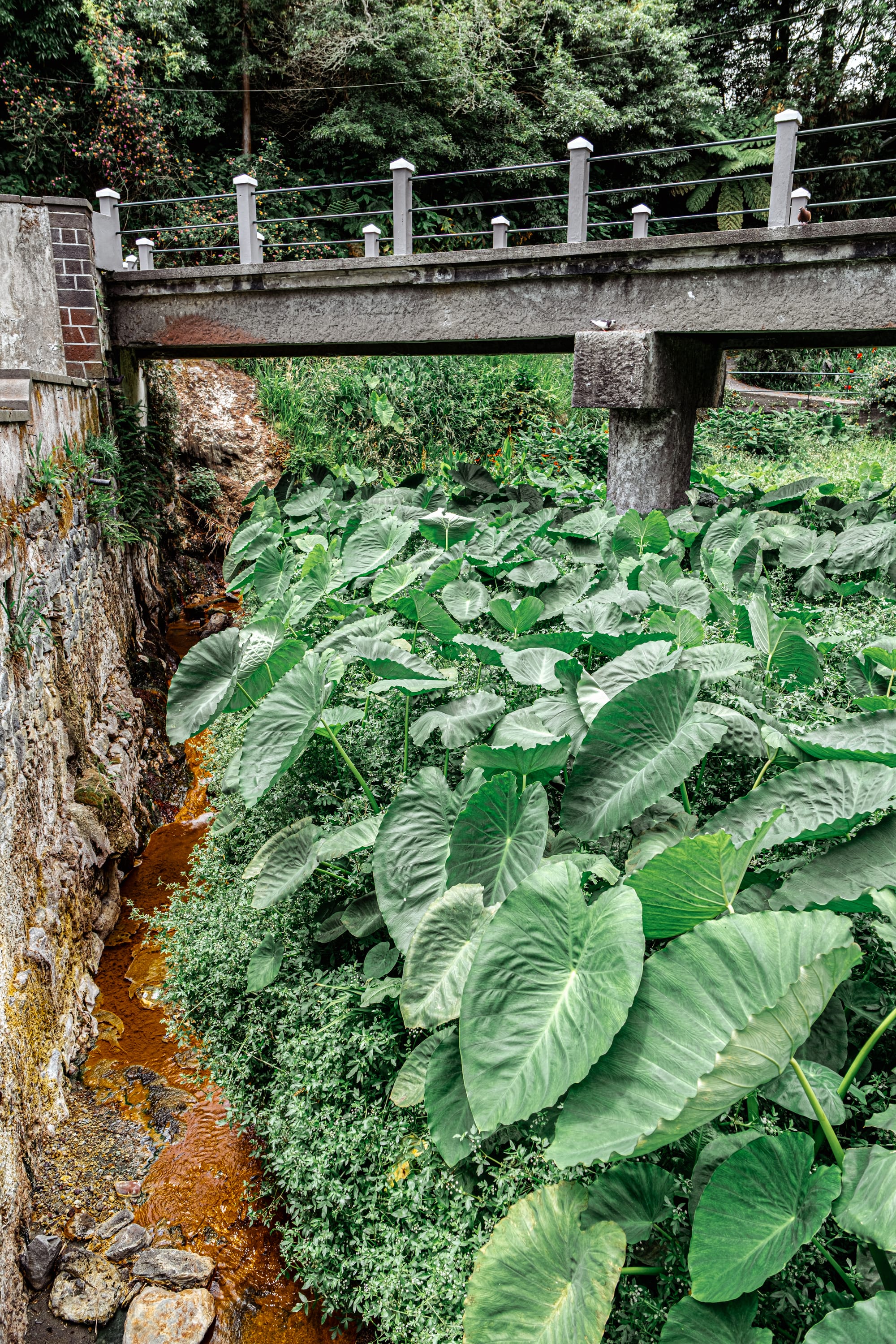
Lush glimpses of Furnas flora: unfurling fern fronds, radiant hydrangeas, and taro thriving by mineral-rich streams
Birds tend to follow the same slow rhythm. You might hear the Azores blackbird, the buzz of a bee, the sudden flit of a wagtail. Most sound here is diffused by terrain. It feels like the valley muffles what it doesn’t want to carry.
And then there’s the smell—the ever-present scent of sulfur. It moves in waves. Sometimes faint, sometimes strong enough to catch you mid-sentence. A little like eggs, a little like stone. It doesn’t bother you after a while. In fact, when you leave, you might miss it.
Waterfall detours and garden edges
While not officially marked on every map, there’s a small waterfall not far from town—tucked off a quiet roadside, framed by thick bamboo and ferns. It’s the kind of place you find without planning. The path is damp, the rocks mossy, the sound of falling water steady but not loud.
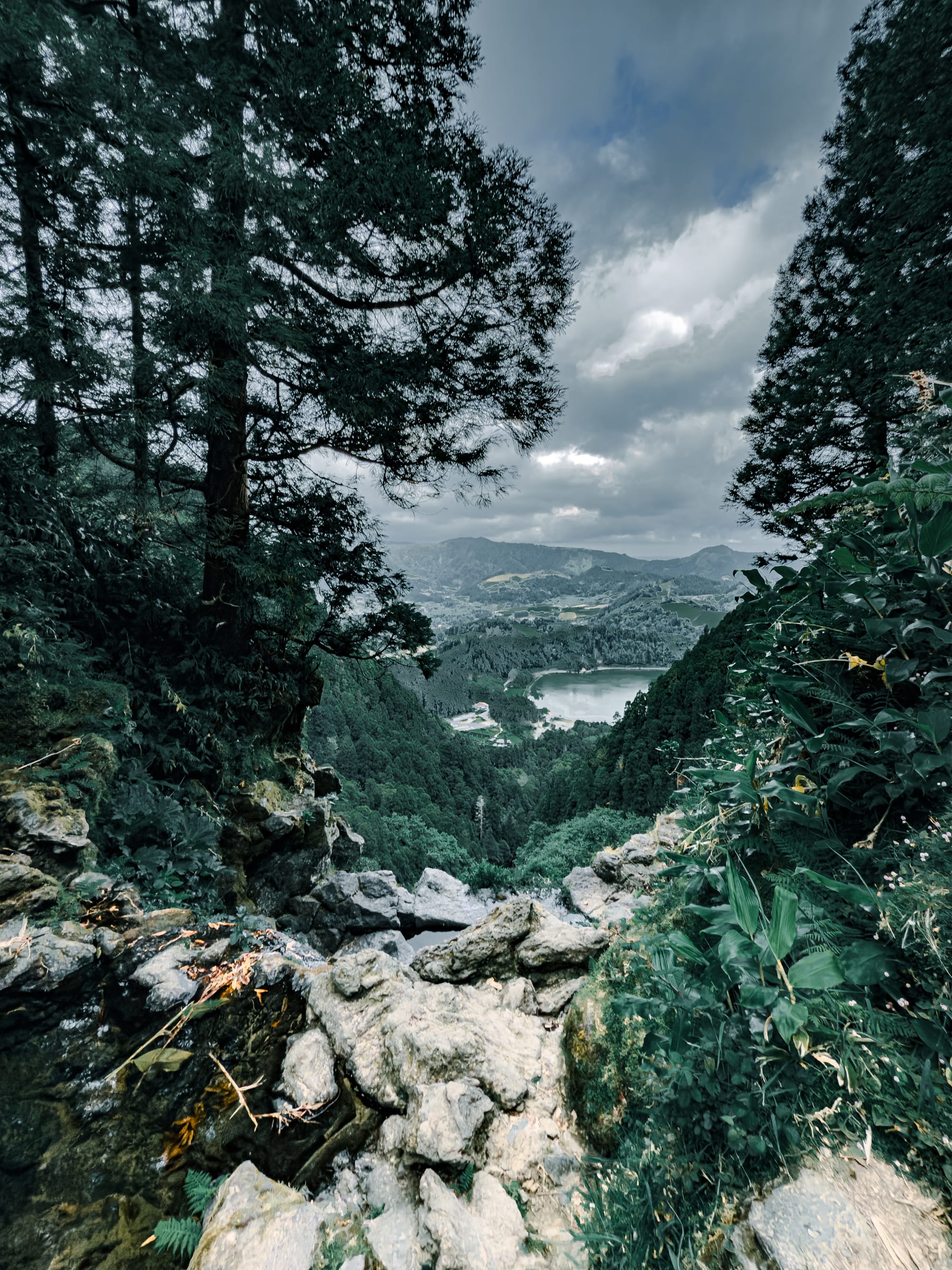
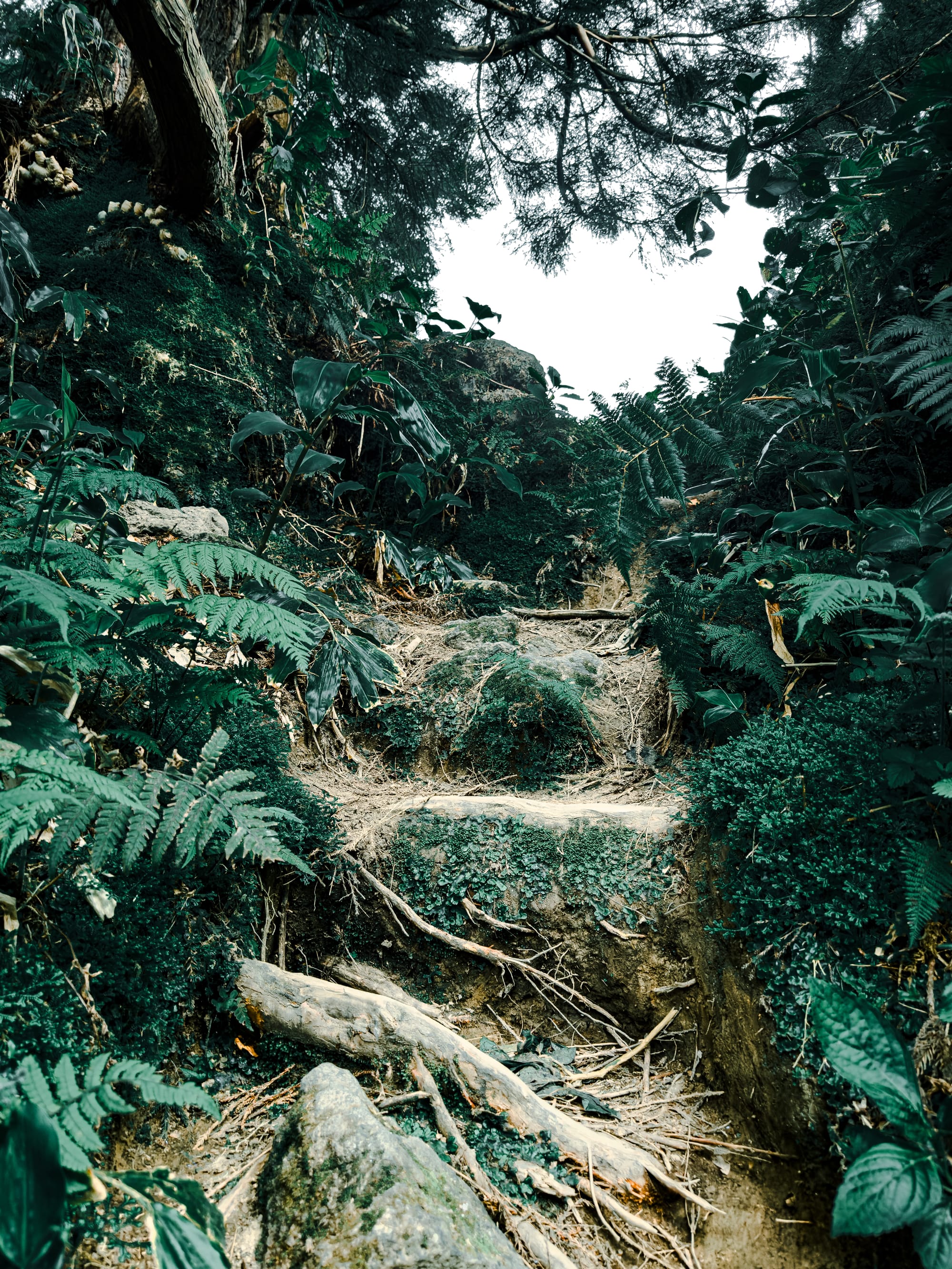
Looking back from behind the waterfall trailhead, this shaded forest view opens to the valley and Lagoa das Furnas below
You’ll also notice microgardens all over town—raised beds of taro or cabbage planted along narrow curbs, hedges of ginger, vines climbing power poles. The climate supports abundance, and the people don’t waste it.
Practical notes for visiting
Furnas is an easy place to reach by car and walk once you arrive. Parking is available throughout town. Most sites—springs, gardens, and paths—are free or low-cost. A morning or an afternoon here is enough for a first visit, but the pace encourages return. Bring shoes that can handle mist and uneven pavement. Pack a towel if you’re planning a thermal soak.
There’s food available in the center—casual spots, local restaurants, stalls selling geothermal corn. For coffee or quiet, the main square or a bench by one of the fountains works just fine.
If you’re staying longer, the surrounding hikes and hot pools naturally fold into the rhythm of a few days.
If you're not in the area and don't have a car, there are a variety of tours that go to many of these Furnas locations.
Furnas offers ground that steams, water that heals, streets that curve. Take time, take photos, and breathe in the mineral air. Whether you come for a soak, a walk, or just a look around, you’ll find that the town moves slowly enough to notice.






